| Don't like ads? | No ads |
Dawn was breaking on October 20th, 1992 when a Delaware State Police officer noticed the driver of an oncoming Chevrolet Celebrity station wagon casually tossing out a small white jug from the window of his car.
The officer quickly flipped on his lights and siren and did a U-turn on State Highway 13 just north of Dover.
The surprised driver initially swerved from one side of the road to the other before coming to a panicked stop on the shoulder.
As the officer walked up to the driver’s side door, he caught the unmistakable scent of alcohol coming from the car. He turned on his flashlight to look inside the rear of the vehicle.
There were a few dozen more of those white jugs in the cargo area just like the one the man had thrown out. His eyes squinted as he focused in on the label. “Michter’s?” he wondered out loud before asking the driver to step out of the car.
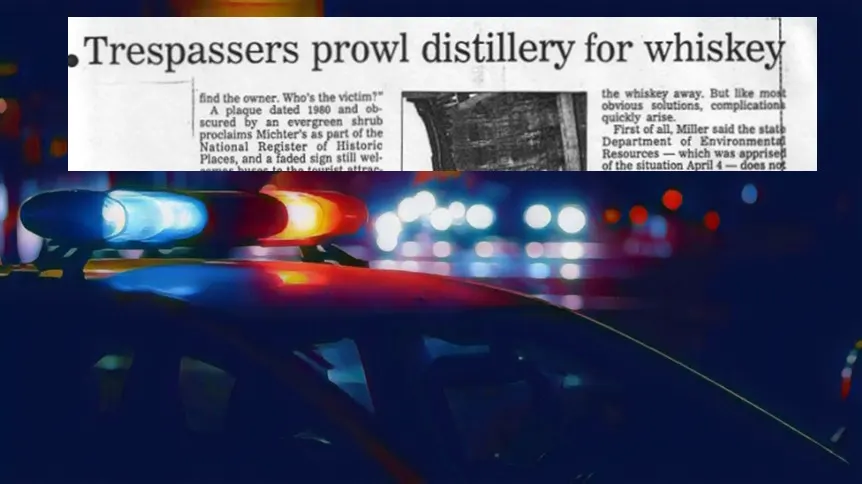
The story may not have happened exactly like that, but it is based on a secondhand source that recalled an article in the local newspaper about a Delaware driver getting pulled over for drunk driving in the early 90’s with a backseat full of Michter’s decanter jugs.
The story was before the internet era, but newspapers occasionally reported on the many looters that would scour the abandoned Michter’s Distlllery in Schaefferstown, Pennsylvania.
Michter’s Distillery
The distillery had closed its doors officially on Valentine’s Day, 1990. Dick Stoll, who was the Master Distiller of Michter’s at the time, received a phone call from the bank on that day informing him to send everyone home, turn off the lights and lock the doors… for good.
The bank was taking over the entire property until unpaid debts were settled.
Over the course of the next 3 years, locals (and some “self-guided tourists”) slowly vandalized and looted the deserted buildings.
They took whatever they could find including memorabilia, gift shop decanters and possibly a few barrels of whiskey with them.
The story of Michter’s in Pennsylvania paused on that fateful day in February, 1990, but it didn’t quite end. The brand itself was abandoned until 1996 when Joseph (Joe) Magliocco and his friend and mentor Richard (Dick) Newman had found that the rights to the Michter’s trademark had been legally abandoned.
On top of that, it was available for the low price of about $275 (essentially the fee to file the paperwork). Magliocco, who owned Chatham Imports, wanted a whiskey label to tie into his business’s other brands.
Michter’s was not just a convenient brand to buy, but a brand that he had a certain nostalgia for after his days as a Michter’s salesman in college.
The purchase of the Michter’s trademark by Chatham Imports began a new era that saw the historical timeline branch off into a new direction. No longer would Michter’s history be rooted in Pennsylvania.
Instead, it would become a Kentucky brand. But to understand how it got there would make more sense if we start from the beginning.
Shenk’s “Distillery”
In 1753, Michael Shenk filed a patent for a gristmill located near Snitzel Creek in what is now Schaefferstown, Pennsylvania (about 50 miles northwest of Philadelphia). A gristmill was essential to have on site if any sort of alcohol production was going to happen.
Many articles like to say that Michael and his brother John started the distillery, but John was only 13 years old at the time. For all intents and purposes, it was Michael Shenk who was the true owner and who would make all of the decisions regarding it in the future.
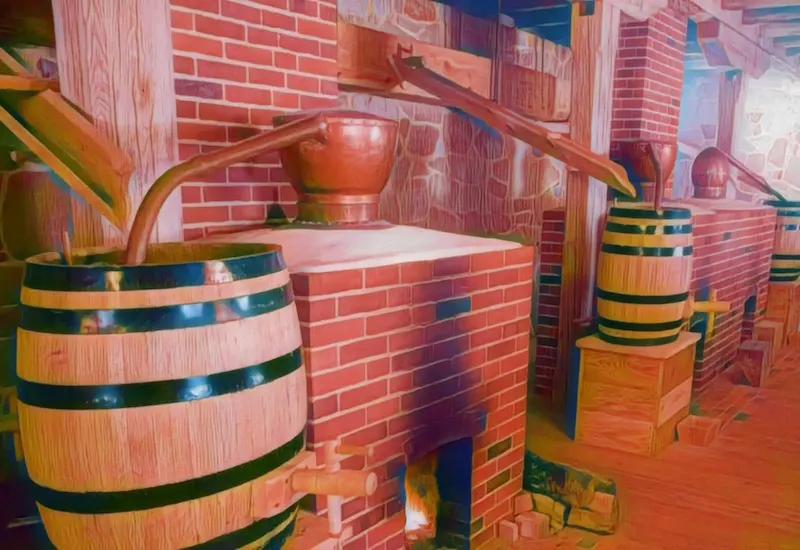
For a family to own a still that made spirits was not uncommon in colonial Pennsylvania. There were likely as many as 3,000 other private “stills” owned by farmers just in Pennsylvania alone. Drinking was baked into the Mennonite culture and any excess crops were distilled primarily for personal consumption rather than being sold at market.
Whiskey in those days didn’t look or taste much like how we experience it today. It was not aged in barrels (although it was likely transported or stored for a short time in them). It was often drank with a good deal of water added to it (making it around 25 proof) for meals. Wine was not widely available in the Pennsylvania area but alcohol of some kind was still popular to serve at the dinner table.
In 1827, the Shenk’s family stillhouse was passed down to Michael Shenk’s Son-In-Law, Rudolph Meyer III. From 1827 to 1860, Meyer let a man named John Kratzer have control over the day-to-day operations. Kratzer expanded the distilling operations by building several more buildings to increase production and storage. Eventually, Meyer sold the distillery to a man named Abraham Bomberger in 1860. Bomberger’s mother was a Shenk and therefore, the distillery was still kept in the family.
Bomberger’s Distillery
After acquiring the distillery, Abe Bomberger went to work on expanding the operations so that it could produce even more whiskey than it currently was. During his ownership, the distillery grew from a sort of “agricultural model” of a distillery to a legitimate commercial distillery.
Abe married Catherine Horst in 1866 and together they had two sons. By time 1875 rolled around, the distillery was doing so well and was so large that it had to begin hiring outside help rather than depend on extended family to run it. When Abe’s sons finally came of age, he changed the name of the distillery to “Abraham Bomberger and Sons.”
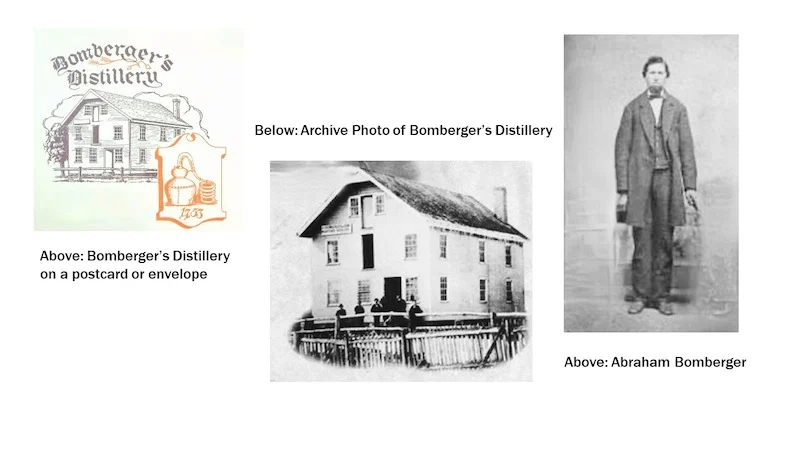
Abe Bomberger died in 1904 and his two sons, Horst and Samuel took over and renamed the distillery “H.H. Bomberger.” Horst had an extremely strong and abrasive personality and made all of the decisions over his younger brother. Even when he fell into ill health in 1915 at the age of 48 (with a stroke and Parkinson’s Disease that left him confined to a wheelchair), he retained full control over what happened with the distillery.
Horst’s strong personality was probably the reason why his own son, Paul, ran away from home, changed his name and literally joined the circus. Horst would continue to run the distillery with his brother until Prohibition began in 1920. A few months later he succumbed to his numerous maladies.
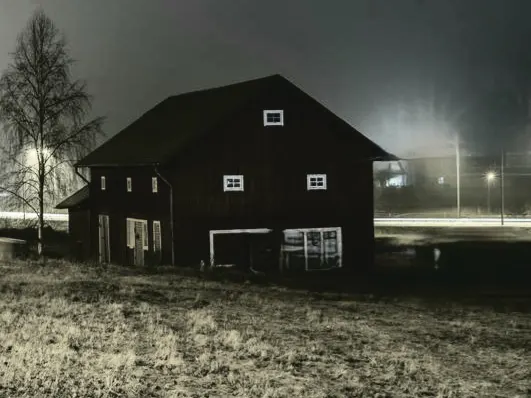
On the day before Prohibition began, locals lined up at the distillery with casks, jugs and bottles of all sizes to get their fill of legal whiskey before it would have to be shut down. The line was mentioned as being 2 ½ miles long on that day.
With the stocks emptied out, the Bomberger brothers sold the distillery to a local man named Ephraim Sechrist who said he’d be using the land for “farming.” It is rumored that the still wasn’t completely quiet during the 13 years that Prohibition was in place. Whenever the locals would start running low on whiskey, the neighbors would get together and secretly fire up the still to make some more.
Prohibition Ends and Distilling in Pennsylvania Declines
The end of Prohibition was a strange time for alcohol in America. Whenever something that has been illegal for so long becomes legal again, many old stigmas will die hard. Since alcohol has to be taxed at almost every step of the process, bootleggers could not legally sell their stocks just because buying, selling and and drinking alcohol was no longer illegal.
On top of that, many areas of the United States chose to remain “dry” as there was still a large portion of the population that did not agree with the 18th Amendment being repealed. This is why the history of what happened to the Schaefferstown Distillery when Prohibition ended is very murky.
The distillery had likely seen a few runs of whiskey making when it was illegal, but they played it cautiously with the public that they were ready to start back up afterwards. So from 1933 to 1950, historical records of what was happening at the old Bomberger’s Distillery are basically non-existent. This chapter will attempt to cover the two main competing stories. The first story goes something like this:
Nine Years after Prohibition ended, Sechrist sold the land that the distillery was on to a man named Louis Forman in 1942 because he didn’t need it for “farming” anymore. Forman already owned a business that distributed spirits and he had big plans for his newly acquired distillery. But his plans were quickly put on hold after he was drafted in the military for World War II. He decided to sell the distillery in the chance that he never came back home.
Forman eventually did come back home in 1945 and found the distillery was owned by the Logansport Distilling Company who was then bought out by Schenley Distilleries Corporation. He would have to wait until 1950 for the chance to buy it back.
If you were unaware, Schenley was basically the “Diageo” of liquor during the 1940s, 50s and 60s and was considered one of the top 4 producers of liquor in the world along with National Distillers, Hiram-Walker and Seagram’s.
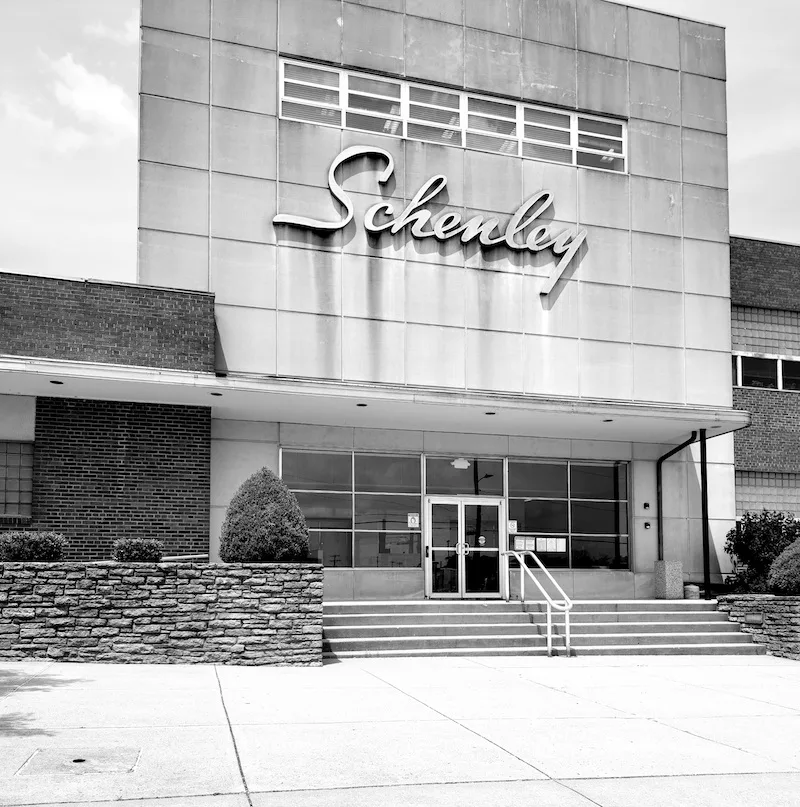
After becoming the new owner in 1950, Forman changed the name to “Michter’s Distillery” after combining the names of his two sons, Michael and Peter. “Michter’s” looked and sounded very much like a typical “Pennsylvania Dutch” name which was perfect for the area that it operated in.
After surveying the distillery grounds, he found a recipe in the attic of one of the buildings which detailed the style of whiskey that used to be produced there. A year later in 1951, Forman asked his new Master Distiller, Charles Everett Beam (who was related to the famous Beams in Kentucky) to try and recreate that recipe. It would eventually become some of the first batches of “Michter’s Original Sour Mash Whiskey” produced.
This Sour Mash Whiskey could not be produced using modern column stills. Instead, it was produced using relatively small pot stills. Forman also decided to renovate much of the distillery grounds and buildings after decades of neglect. One of the workers who helped with the renovations was Dick Stoll, a name that will come up in the future.
Michter’s Pot Still Sour Mash Whiskey is distilled from a mashbill that can’t legally be called a bourbon or rye whiskey. It was 50% corn, 38% rye and 12% malted barley. It came off the pot still at around 156 proof and was then proofed down to 115 proof before entering the barrel.
Forman wanted the whiskey to be aged for six years before releasing it, but when that time came to bottle it, a national recession prevented him from selling it. There was a glut of whiskey at that time and nobody was making much of a profit. At this point the distillery was drowning in debt and too much inventory.
Forman had no choice but to put it up for sale. Spirits conglomerate, Pennco, became its new owner. The competing story comes from Abraham Bomberger’s great granddaughter Yvonne Fowler who later wrote a blog detailing all of the history that she could recall.
She claims that Louis Forman actually had nothing to do with the distillery at Schaefferstown at all until the 1970s. She says that Pennco owned the distillery ever since the end of Prohibition. The fact that Louis Forman invented the brand he named “Michter’s” was still true, but he came up with it in 1942, not 1950. Proof of this comes from jugs of Michter’s Whiskey that have tax stamps showing “1942” on them.
But instead of any mention to Schaefferstown being the distillery that produced the whiskey for this brand, the jug lists Sheridan, Pennsylvania as the address where Michter’s Whiskey was “decanted and jugged.”
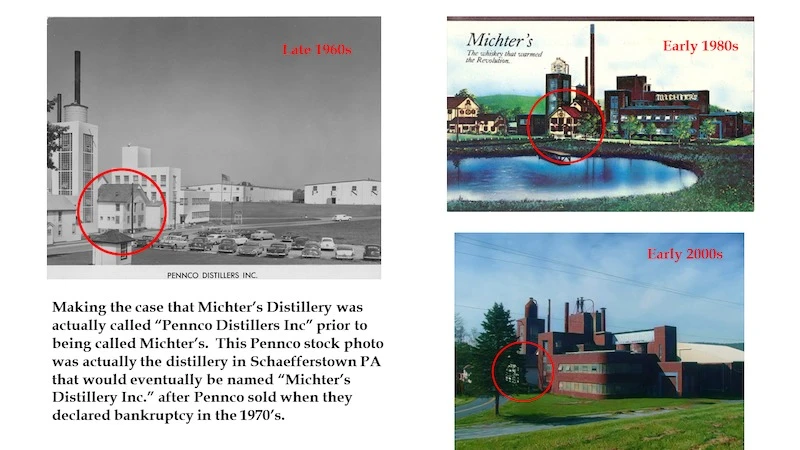
In fact, the company “Pennco” is the biggest question mark of the entire debate of who owned the distillery. Very little literature exists that talk about it and where it would’ve been headquartered and what distilleries it operated.
Some speculate that Continental Spirits (based out of Philadelphia, PA) was the owner of Pennco. But the most logical explanation may be that Pennco was a brand rather than an actual distillery. It was not a brand like Sazerac whereby they owned multiple distilleries and brand labels. So was Louis Forman the owner of Pennco too? Was he a board member at Continental? Or did he just own and oversee the Michter’s brand at Schaefferstown? Records on this man and the company are few and far between and we may never know the entire story.
Pennco’s Struggles
In the last section, it was questioned if Pennco was a distillery or a conglomerate of distilleries. If we are to assume it was a conglomerate, then they were likely one of the larger spirits producers outside of Kentucky, Indiana and Tennessee in the United States.
And it is likely that Louis Forman had control over most of the daily operations at the Schaefferstown facility. Pennco was instrumental in ensuring that the distillery was modernized by having a column still installed next to the existing pot stills. Measuring 5 feet in diameter and standing 70 feet tall, this would help the distillery to increase production to over 50 barrels per day.
Not all whiskey that was made on the still was stored at the Schaefferstown location just as not all the whiskey that was stored on the grounds was distilled at the distillery. As confusing as that may sound, it was quite normal for distilleries to do this before the turn of the millennium. Some of this whiskey was transported to Pennco’s other warehouses around the state.
In 1972, Head Distiller Charles Beam’s health declined to the point where he had to retire. Luckily, he had been grooming the head of maintenance at the distillery for a few years; Dick Stoll. Dick had literally worked his ways up from a common laborer on the distillery grounds to head distiller.
His hard work ethic as a groundskeeper caught Beam’s eye so he tapped him to become his apprentice. Dick would go on to distill whiskey for Pennco, contract distill for Wild Turkey and even distilled one of the most vaunted bourbon’s in the 20th century that was contracted by A.H. Hirsch.
Stoll was one of the few who mastered the rare feat of simultaneously distilling with both a pot still and a column still, becoming the only head distiller in the United States to do this at the time.
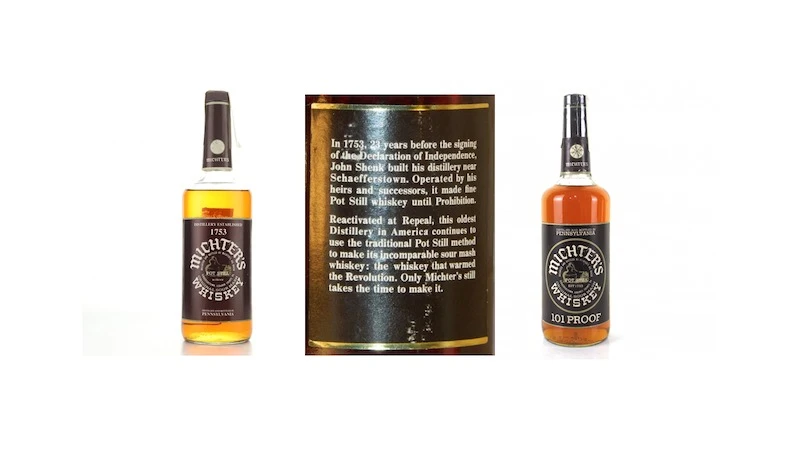
From the 60’s to the 80’s, Forman used his liquor wholesale business to distribute his Michter’s Whiskey brand. This whiskey was supposedly made from the existing stocks of pot still distillate or distillate made for Pennco products.
Most products wearing a Michter’s label were bottled in white China crocks in the shape of jugs and were sold for around $8 a fifth. Forman later decided to bottle his Michter’s brand in a clear glass bottle for a cheaper price after finding out that more people were purchasing the white jugs as gifts or collector’s items than drinking it.
The clear glass bottle has a few similarities to the modern-day bottles of Michter’s for sale. They came in either 86 or 101 proof versions while most decanters came in only 86 proof versions.
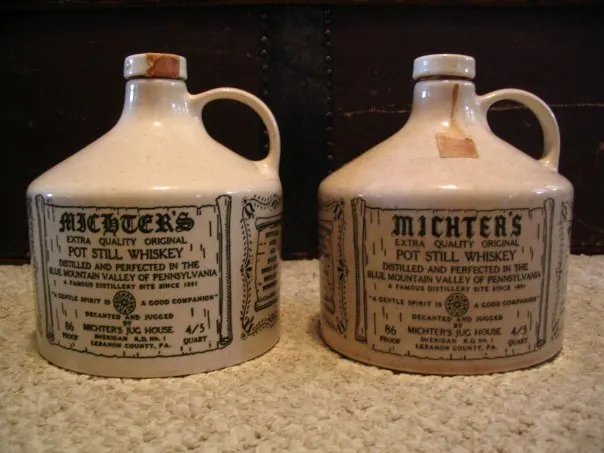
Michter’s Distillery, Inc.
As the whiskey glut continued to grow, so did Pennco’s financial troubles. The country had turned a cold shoulder to aged whiskey and Pennco began to buckle under the weight of debt and unsold stocks.
They foreclosed on the Schaefferstown Distillery in 1974. Louis Forman reached out to some of his friends that were businessmen around the Lebanon County area and together they purchased the entire distillery.
Their first order of business, after renaming from “Michter’s Distillery” to “Michter’s Distillery Inc.,” was to capitalize on the historical importance of the site by having it added to the National Register of Historic Places.
It was the very first distillery listed. Being on the National Register also helped the process of acquiring a license to sell whiskey directly at the distillery (an industry first).
Around the same time as all of that was going on, still maker Vendome had built two operational pot stills to display to the public as models of what early American distillery equipment looked like.
After a couple of years, the display was finished and Vendome was unsure what to do with them.
It was around this time that Louis Forman found out about the stills and contracted Vendome to purchase one. He saw an opportunity to have a historical still producing whiskey during public tours at their location.
Vendome agreed to sell one and the small 550 gallon pot still was moved t0 and installed at Michter’s the Schaefferstown location.
The Decanter Craze Engulfs America and Michter’s Distillery Leads the Way
The downward trend of whiskey sales continued to hurt Michter’s Distillery. Few contracts came in during the late 70’s and early 80’s, meaning their stills were silent for longer periods of time.
Michter’s didn’t care if the whiskey was being drank or not, they just needed it sold. One of the few openings they saw was the success some distilleries were having with bottling up their whiskey in collectible decanters, so Michter’s decided to follow suit.
Collectible decanters were what the public was buying and so in 1976, as the nation prepared for their Bicentennial Celebration, Michter’s began to release decanters with various American images.
Shapes like Colonial Settlers, the Liberty Bell, Conestoga Wagons and much more filled the shelves.
It was during this time that they also began to draw upon their very long history by claiming that the whiskey that had been made on the same grounds 200 years ago may have been drank by Revolutionary War Soldiers by changing their logo from “Michter’s Sips Softly” to “The Whiskey That Warmed the Revolution.”
Three years later, the King Tutankhamun exhibit began to make its way around America. Michter’s also capitalized on this by releasing a line of Ancient Egypt themed decanters.
Figures like King Tut and Queens Selket, Nefertiti and Cleopatra were extremely popular and remain some of the most iconic ceramic decanters to be released by any distillery.
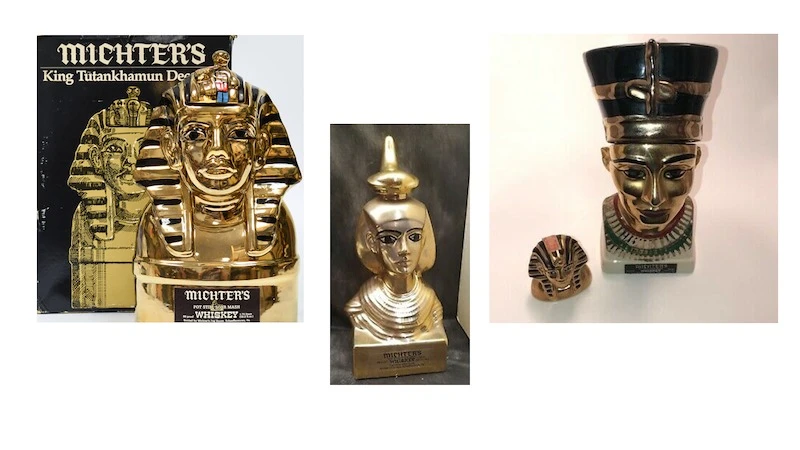
In 1980, Michter’s Distillery wanted to celebrate their induction onto the list of National Historic Landmarks by creating an event that was large enough to attract the press and hundreds more visitors to the distillery.
They set the date of this celebration to run from June 19th through the 22nd.
To mark the occasion, they planned on selling a limited number of specially made 23k gold gilded decanters in the shape of their original pot still (not to be confused with the one currently at Fort Nelson).
Announced as a “future collector’s item,” the bottles were to be sold for $500 each.
This was an astounding amount of money in 1980, let alone today. But Michter’s thought ahead about the collectible nature of these and announced that any unsold bottles would be smashed, whiskey and all, in the parking lot at the end of the day on June 22nd.
In reality, 2000 decanters were produced and 893 were sold. Then on June 22nd at 6:30pm, spectators were invited to help with the most expensive bottle breaking ceremony in history as they hurled the decanters to the pavement, preserving the collectible nature of the bottles.
A little more than a decade later, the bottles were worth only a fraction of what they were bought for.
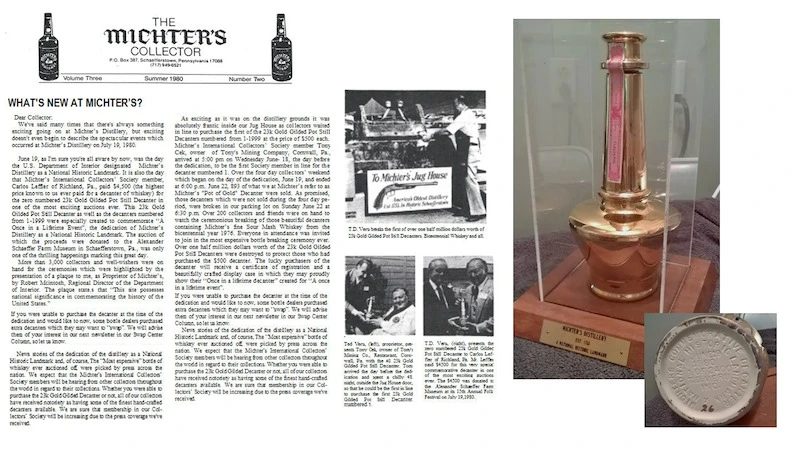
Dick Stoll and the Final Days of Michter’s Distillery
Dick Stoll continued running both a column still and his new pot still from the late 70’s into the early 80’s. He claimed that he only made whiskey from the Fall to the Spring because Summer did not produce good whiskey.
The whiskey that he made on the pot still was intended to be bottled and sold to the public who came to tour the facility. In the 1980’s, this would become the primary source of income for the entire distillery as contracts had dried up.
As the whiskey distilling business was faltering, tourism was the only thing keeping the Schaefferstown Distillery alive. But lagging tours and gift shop purchases could not bring the distillery out of the debt they were saddled with.
The distillery had no choice but to file for bankruptcy in 1983. Since federal regulations with taxes and alcohol are complicated, the bank that held the bonds to all of the remaining aged whiskey on the premises had a holding company watch over it.
The holding company did little more with it than try to milk it for all it was worth rather than try active measures to save it.
Production was eventually halted in 1989 and the end came shortly after. This was not a big surprise as newspapers of the day (some as far away as Chicago) had reported on the financial problems they were having.
One of the last customers to have paid inventory remaining in the warehouses on site was A.H. Hirsch. Hirsch had contracted Michter’s Distillery to distill 800 barrels of bourbon (ironically, it was the same mashbill as Jim Beam and Wild Turkey bourbon) for him back in 1974.
Rather than collecting the barrels after 6 to 8 years (which was the average length of time it was usually aged), he kept those barrels there up until the last possible moment. Hirsch never did end up collecting them. He did, however, agree to sell them to a man named Gordy Hue in 1989.
Gordy quickly dispatched trucks to collect the barrels and ship them to Ohio where roughly 550 of them were vatted in stainless steel tanks to stop the maturation process while the remaining 250 were sent to Lawrenceburg, KY to continue aging.
It was right in the nick of time too because on Valentine’s Day in 1990, Dick Stoll received a call from the bank that he was to shut everything down and tell everyone to leave.
The distillery grounds, which had produced whiskey for over 230 years, would never produce a drop again.
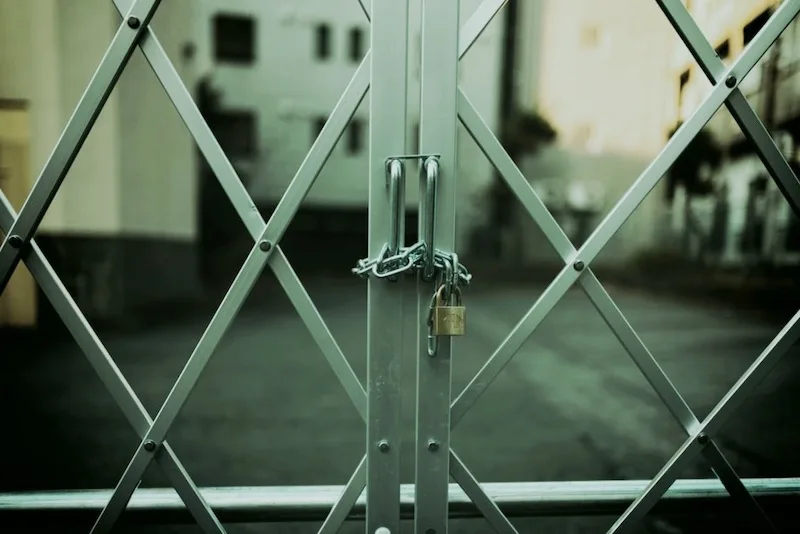
Over the next few years, the facility was looted by everyone from scavengers to teenagers who found out that the gift shop and jug house still held many full cases of whiskey.
It was reported in local newspapers that the road outside of the distillery was littered with smashed decanters from the night time prowlers that drank their fill and then hopped in their cars to go back home.
Eventually stories of the unattended whiskey made its way to the Federal Government. Remember the fictitious story from the beginning of this article?
The Federal Government did have knowledge that the distillery was full of whiskey that was untaxed, but had little interest or resources to take any action.
The action that they did try to pursue was to hunt down Ted D. Veru (the man who supposedly was the owner or lein holder of the distillery at the time).
But after many visits to properties listed on the distillery paperwork came to be either non-existent or “shell corporation” addresses, the Federal Government gave up for a short time.
It is widely believed that since the whiskey’s bonds hadn’t been paid, that the barrels of whiskey that remained inside of the Michter’s Distillery warehouses could not be resold.
Therefore, after about 2 years of bureaucracy, the Feds dispatched a team to gut the entire facility of any remaining whiskey by dumping the barrels into a tanker truck and smashing any existing bottles.
The tanker truck then drove to a facility in New Jersey that processed it into ethanol for fuel. Many storytellers like to speculate that the fuel was eventually used in drag race cars.
As for Dick Stoll, he moved on from his role as the head distiller at Michter’s Distillery into the concrete business for a few years before retiring to a quiet life around Lebanon County.
Before that, he was called up one last time in 1993 by the bank that held the deed to the property and asked if he’d go back in and inventory all equipment, whiskey and buildings.
This was a couple months prior to the Federal Government’s arrival.
Dick’s story wasn’t quite finished after that, but the distillery at Schaefferstown was no more. The US Department of the Interior officially revoked the Michter’s Landmark Status in 1997.
Rescuing the abandoned still at Michter’s Distillery
In January of 1996, a lawyer friend of David Beam approached him about the distillery grounds in Pennsylvania she had just purchased at an auction.
She wanted him to survey and inspect it since he was knowledgeable about distilleries (he was a master distiller at Jim Beam for 37 years after all). When he surveyed the grounds that winter, he was amazed to find the Vendome-made pot still intact and in good condition.
It was a piece of history that he could not leave there to rot away. David formulated a plan to get it out of Pennsylvania and back home to Kentucky. That summer, he assembled a small team consisting of his 3 sons along with Larry Walker of Heaven Hill and Donnie Ritchie of Jim Beam. They drove 730 miles to Schaefferstown with a couple of flatbed trucks and a cherry picker.
Together with some Mennonite farmers for extra muscle, they lifted the 1 ton copper pot still and other components out of the building through the roof and onto the truck bed. Then his small crew drove it back to Bardstown where it was stored in his garage for the next 15 years.
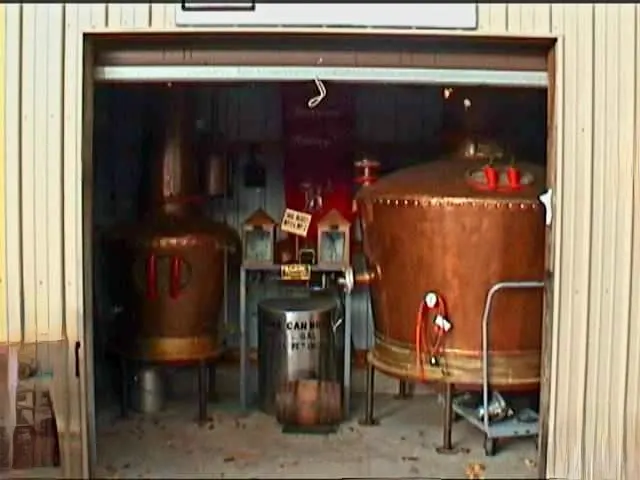
Sometime around 2010, David Beam sold the pot still to a young Tom Hersbruck. Tom was starting a distillery in Chagrin Falls, Ohio and planned on making Applejack and whiskey with it. He managed to get in contact with Dick Stoll who, together with David Beam, taught him how to install and use the pot still.
He filled his first barrel from the still in 2011. A few months later, Tom received a phone call asking if he would be interested in selling his newly acquired still. The man on the other line was none other than Joe Magliocco.
Joe Magliocco and the early days of Michter’s operations in Kentucky
In 1996, lawyer and owner of the Chatham Imports company, Joe Magliocco and his friend Dick Newman (formerly with Austin Nichols) happened upon the abandoned trademark “Michter’s.”
Why they found this abandoned trademark and decided to purchase the rights to it can only be speculated upon, but Joe has repeated many times that he was a salesman for Michter’s back in his college days and had a certain nostalgia for the brand. He also figured that Chatham Imports needed a whiskey brand to help diversify his portfolio. He became the official owner of the trademark for a filing fee of around $275.
Now that Chatham Imports was the new owner of one of the oldest labels in whiskey; Joe, Steve Ziegler and Dick Newman got to work trying to find whiskey he could release under the Michter’s Distillery name.
Between 1997 and 1999, the trio used various contacts in Kentucky to sample whiskey with the intent to buy it and bottle it. They eventually settled on sourcing barrels of rye whiskey and bourbon from United Distillers (a brand that would eventually become Diageo).
Around the same time, they established a relationship with Julian Van Winkle III. Julian was running his business out of Lawrenceburg, KY in 2000 and had a bottling line at his disposal. He agreed to bottle the barrels that Joe had purchased. Starting in September 2000 and ending in April 2002, Michter’s 10 year rye and 10 year bourbon were bottled and shipped out from Julian’s facility in Lawrenceburg.
These barrels are said to have ranged anywhere from 16 to 19 years old. The bottles stand apart from other M10 bottles by the wording “bottled in Lawrenceburg, KY” on the back label.
The neck labels of those early batches displayed either single digits or two numbers and a letter. It was much less standardized than today’s neck labels that indicate the year, month and batch (or barrel) number.
Prices varied for this extremely old and rare whiskey, but LeNell’s in New York claimed to have sold the first bottles of M10 anywhere from $31 to $38 in the early 2000’s. In a sign of the times, those price points were actually considered to be somewhat high among enthusiasts.
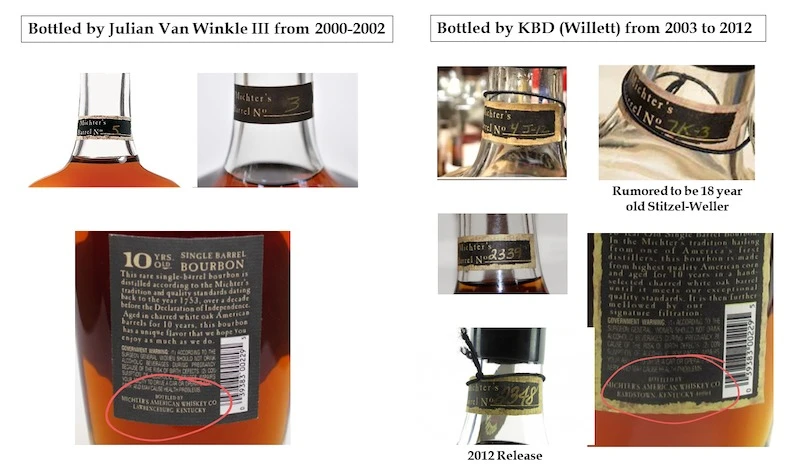
In late 2002, Julian had put his Lawrenceburg business location up for sale and began the process of moving his operation to Frankfort, KY. He had just secured a deal with Buffalo Trace to partner with his bourbon brand. Julian told Joe he could no longer bottle his whiskey but had a friend in Bardstown that could help him out. That man was Even Kulsveen. Even and his wife owned Kentucky Bourbon Distillers, Ltd (KBD otherwise known as Willett).
They had an inactive distillery at the time, but had refilled their warehouses with whiskey sourced from all over Kentucky. They were already “Doing Business As” (DBA, a real term that was regulated under Kentucky law) bottlers of other whiskey labels that were not owned by them, so they agreed to take on Michter’s.
In July 2002, Even officially registered “Michter’s American Whiskey Co.” under Kentucky Bourbon Distillers, Ltd. During this time, Michter’s labels said “Bottled in Bardstown, KY” on the back. KBD’s stocks were mostly from United Distillers/Schenley and Heaven Hill.
KBD did not just source well-aged bourbon and rye whiskey, they also dealt with bulk whiskey purchases from distilleries that had too much on hand. The bulk whiskey they did source was much younger and cheaper to buy. Together with Joe and his team, a new idea was hatched to expand the Michter’s Distillery line.
In early 2003, Michter’s Unblended American Whiskey and Michter’s Single Barrel Straight Rye Whiskey were born. They were bottled in a new bottle shape along with labels that resemble the same ones you can find today. Ironically, those labels were very similar to the ones that were previously used on Michter’s Distillery bottles from the 1970s and 1980s.
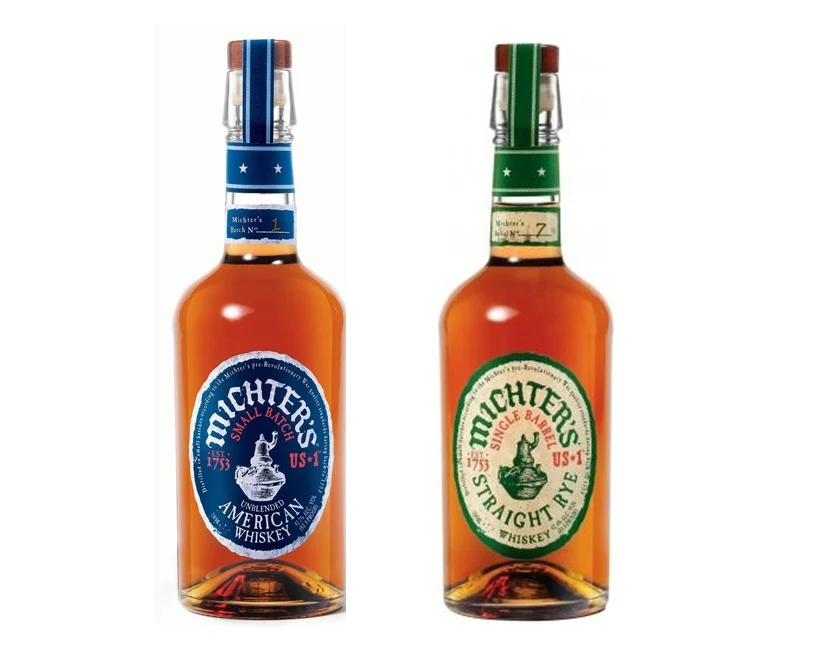
One of the first products to hit the market aside from the M10 bottlings was called “Michter’s Unblended American Whiskey.” Released in 2003, the online forum Straightbourbon.com was full of reviews and speculation where members noted the similarities between it and Brown Forman’s Early Times Whiskey.
It was likely that Michter’s Unblended was also using additives to make the liquid appear darker as the low proof should’ve resulted in a more straw-like color. But additives are completely legal as the whiskey was not labeled a bourbon.
Around the same time, Michter’s Single Barrel Straight Rye Whiskey was released. This was believed to also come from Old Forester since they were still producing rye whiskey for Heaven Hill. Michter’s portfolio had now expanded to four labels.
A Phased Approach to Expansion
If you talk to Joe Magliocco for more than 30 minutes, he’ll likely take you down the path of his three phase approach to building the Michter’s brand. He said the first phase was to source the best whiskey he could find while the second phase was contract distilling whiskey to the specifications he and his team thought were best and the third phase would be to distill, age and bottle their own whiskey all by themselves.
This sounds like a perfectly sound idea, but it is hard to pinpoint the exact year he came up with it. It is unlikely that Joe went into the Michter’s brand initially with this in mind. Instead, it probably took him a few years in the business to realize that he could not source whiskey forever.
There was a lot of chatter around 2003 that aged stocks of bourbon and rye where starting to dry up. Joe experienced this first hand after watching his partnership with Julian Van Winkle come to a conclusion along with cautionary warnings from Even Kuslveen as to the finite amount of whiskey he could source from him.
But Joe was in no position to build a distillery from the ground at this point in time. All of the consultation he received told him that it would take a full decade to achieve. So while that would be his end goal, he had no choice but to secure a flow of whiskey for his brand by finding a distillery to contract distill for him in the interim.
In 2004, Michter’s Distillery entered into an agreement with “an undisclosed Kentucky distillery” to produce whiskey for them for a few days out of each year.
Early on, it was suspected that the undisclosed distillery was Brown Forman’s Early Times Distillery (DSP-KY-354).
This was later confirmed by Fred Minnick who published it in his 2015 book “Whiskey Curious.” From that point on, it was considered an open secret (much to the displeasure of Joe).
His relationship with KBD didn’t end completely, though. Even Kulsveen would continue bottling M10 bourbon and rye whiskey for the Michter’s 10 Year label all the way up to 2012.
The recipes, yeast and barrel entry proof for their lines of whiskey were all specified by Michter’s and then put into barrels that they sourced from McGinnis Wood Products, Independent Stave Company and one other undisclosed barrel producer (possibly Kelvin Cooperage).
Michter’s barrels were some of the most expensive in the business due to their insistence that the wood was seasoned anywhere from 18 to 36 months (not to mention their low barrel entry proof created the need to use more barrels to obtain the same amount of liquid).
This was almost unheard of considering most distilleries used wood that was seasoned from 3 to 6 months. They also specified that their barrels were to be toasted prior to being charred.
Strangely, Michter’s Distillery has also admitted that they do not use one set char level. Rather, they use a mixture of barrel char #2, #3 and #4 for their whiskies. After coming off the still at 138 proof, the whiskey was proofed down to 103 proof before being put in the barrel.
Finally, the barrels would then be aged in Brown Forman’s heat-cycled warehouses until they were ready.
A Fork In The Road: 2004-2007
The ink wasn’t even dry on the contract between Michter’s and Brown Forman’s contract distilling agreement before Joe saw the writing on the wall that this would only be a temporary deal.
Bourbon was growing at a remarkable rate and many distilleries put the brakes on the amount of barrels they were selling as they began to run out.
In light of this, sometime between 2004 and 2007, Michter’s began to work behind the scenes to sniff out industry talent to help them prepare for the future. Michter’s needed to build their own distillery… and fast.
The Saga of Willie Pratt
In 2007, there was a series of important events that would shape Michter’s future. Willie Pratt simultaneously left Brown Forman and hopped on board with Michter’s.
What’s odd is that all of the press releases seem to carefully step around the fact that Pratt left Brown Forman and was hired by Michter’s at basically the same time. Such events are rarely coincidences and it is likely that Pratt had been in talks with Michter’s for a while before this occurred.
Since Pratt was on several committees studying distillation, cooperage, and aging conditions during his time at Brown Forman, he had all of the tools needed to get Michter’s in a comfortable position to set out on their own.
If Willie was acting as a quasi-liaison between both Michter’s and Brown Forman during that time, he likely encouraged Michter’s to decide on a mashbill that he was familiar with. This turned out to be the Early Times mashbill of 79% corn, 11% rye and 10% malted barley.
He may also have recommended they use the rye whiskey mashbill that Brown Forman had been distilling for Heaven Hill. It may have been Willie or Dick Newman who was the voice behind the decision on barreling all whiskey at a low entry point.
Dick’s time with Austin Nichols would have still witnessed the golden age of low barrel entry proof Wild Turkey after all. But it was almost certainly Pratt that convinced Joe and his team that heated warehouses was the preferred aging method for Michter’s to take.
Willie Pratt has been widely and somewhat erroneously considered as Michter’s first Master Distiller. But the fact is that he was never a master distiller at Brown Forman in the first place.
It is also unlikely that he ever produced distillate that filled a barrel of Michter’s either.
But that didn’t mean that Pratt wasn’t leading the charge on many of the fine points of setting up the distillation equipment that Michter’s purchased.
There are many pictures of Willie throughout his time at Michter’s traveling to various equipment or barrel suppliers or inspecting the sites that Michter’s had purchased and were building.
There are even mentions of his role in the scientific processes that Michter’s was using to replicate the “chemical fingerprint” of their distillate against that of Brown Forman’s.
Willie was the guiding force behind establishing the day-to-day operations of Michter’s distilling and aging operations.
If there is one lasting legacy that Willie bestowed upon Michter’s products, it was his involvement in creating specific chill filtration specifications for every style of Michter’s whiskey.
Chill filtration usually involves chilling the aged whiskey down to 20 degrees or so and pushing it through a media (usually paper, organic material or silk screens) that block some or all fatty acids from coming through.
Most people know of chill filtering as the process whereby fatty acids are removed from whiskey after it has aged in order to eliminate a cloudy appearance at lower temperatures (such as when ice is added to a drink).
But filtration like this does have the little known advantage of giving a distillery the ability to “sculpt” what they want their whiskey to taste like.
Willie designed the exact filter specifications for each style of Michter’s whiskey based on a combination of up to 32 different silk screens.
While it is unknown what combination he used for which whiskey, it’s not hard to imagine that this is a large part of the reason why Michter’s has been successful at releasing many ultra-aged whiskey labels since 2007.
Any article that details the life and times of Willie Pratt inevitably mentions his nickname of “Dr. No.” This stemmed from his earliest days at Michter’s where he was the final approval authority on if a whiskey was deemed fully mature or not.
This caused problems with the bean counters who wanted to see more barrels released if they could. But Willie taught Joe Magliocco that whiskey was a fickle animal and was only ready when it was ready.
There has never been any mention of this, but it is the author’s opinion that Michter’s Barrel Strength Rye (first released in 2015) was one of the best examples of Willie’s determination to keep aging the whiskey until it was ready.
The 2015 and 2016 versions of Michter’s Barrel Strength Rye Whiskey are considered by enthusiasts to be the cream of the crop out of all subsequent releases.
It is also pondered by many if these two release years saw the distillate being aged as long as 8, 9 or 10 years. Why that long?
Because if we are to take the time period of when Brown Forman began to distill for Michter’s, that means that distillation of the rye whiskey made to Michter’s standards could have started as early as 2004 and certainly by 2005.
Of course Michter’s has never publicly commented on this, but to taste the 2015 and 2016 releases next to the 2019+ Barrel Strength Rye shows a slight decrease in quality each year.
This would coincide with Willie’s retirement from Michter’s in October 2016.
Only time will tell if the decisions he took in waiting to release barrels ultimately resulted in a superior product compared to those that came after him.
But if Willie Pratt did in fact hold back that rye whiskey for a couple additional years, he may have stumbled upon the secret of one of the best rye whiskies produced in Kentucky in the past decade: the sweet spot occurs around 8 years old.
The Distillery at Shively
Michter’s roots were firmly planted in Schaefferstown, Pennsylvania. So it had to occur to Joe Magliocco that if he was going to build a new distillery that the original location could be an option.
But why didn’t he? Joe spins it best by saying that all of the best equipment, people and know-how in the bourbon biz were located in Kentucky.
There’s very little anyone could argue about that. Schaefferstown was possibly floated as the spot for distilling operations but since there were no distilleries in that area anymore and none of the talented people he was looking to hire wanted to move out of Kentucky, it was a non-starter.
Even rehabilitating the crumbling ruins of the old distillery buildings would’ve been more expensive than building new ones. Michter’s had to settle in Kentucky. But where?
Since Michter’s already had a close bond with Brown Forman and the Early Times Distillery, it made perfect sense to build their distillery nearby.
And that’s exactly what they did after buying the former Caldwell Industries Inc. building in Shively, KY. Even by looking at this image on Google Maps, it’s obvious why they chose to set up shop here.
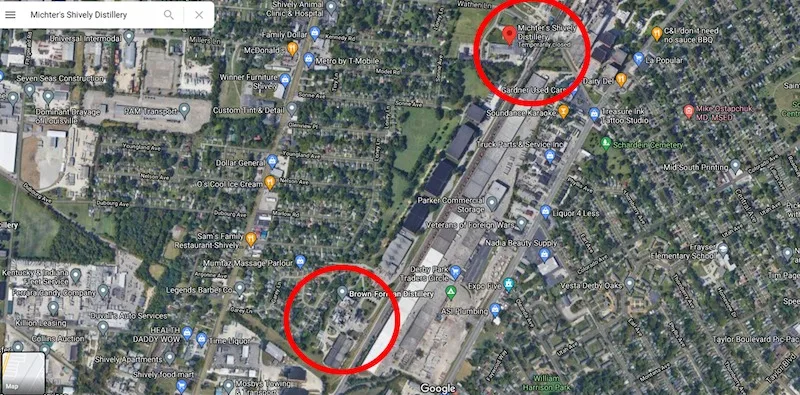
Work began on the new distillery in 2011 with Willie Pratt overseeing the team that was using small pot stills to make experimental batches of white dog (unaged whiskey). They would test it against the whiskey they were having contract distilled by Brown Forman.
None of the white dog from 2012 to mid-2015 actually entered a barrel, but these tests were ongoing while Michter’s awaited delivery and installation of their brand new column still.
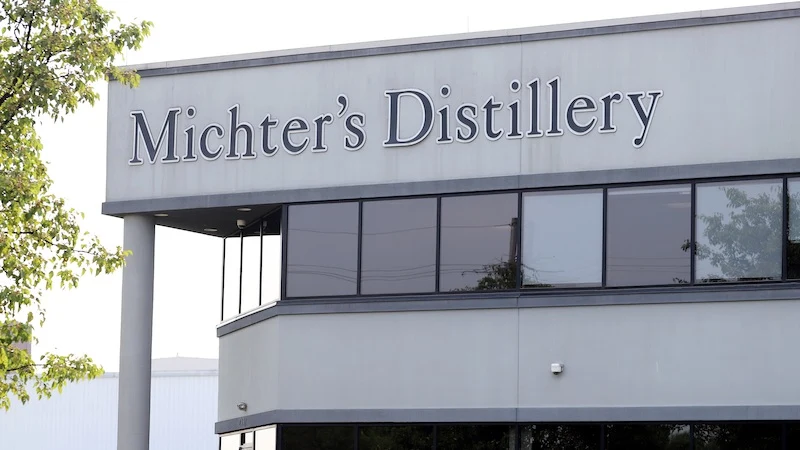
The distillery was eventually completed in 2015. It is not open for public tours, but a few bloggers and journalists have been allowed inside to pictures and detail their experience.
These show a distillery with plenty of natural light, clean floors and equipment and pipes that seem to sparkle. It’s a well thought out design that enforces how the company is ran overall.
Fort Nelson, the little distillery that could
In 2011, Michter’s purchased a building in downtown Louisville that would serve as its public face. The crumbling, dilapidated building was called Fort Nelson and was situated across the street from the Louisville Slugger Museum.
The building was literally on the verge of falling over due to years of neglect including one wall that was leaning 2 feet off-center.
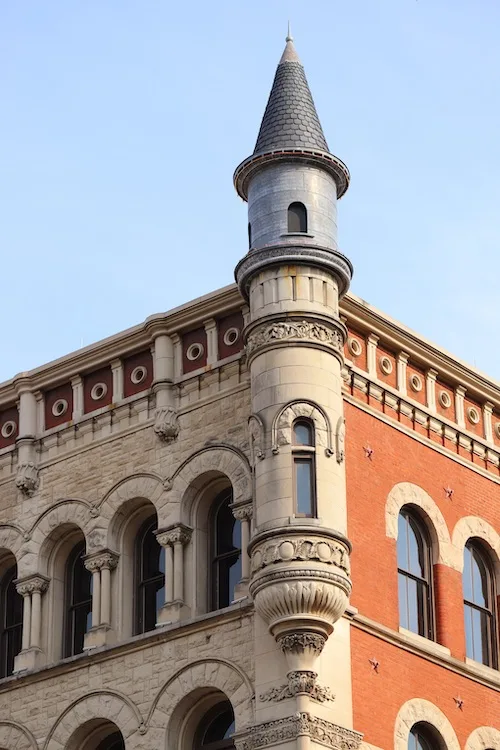
Rather than knocking it all down and starting over, Joe gave the green-light for what would eventually be an 8 year, $8 million resurrection.
The building received a giant internal skeleton of steel I-beams that braced the structure. This allowed for the small distillery, gift shop and bar to be housed inside.
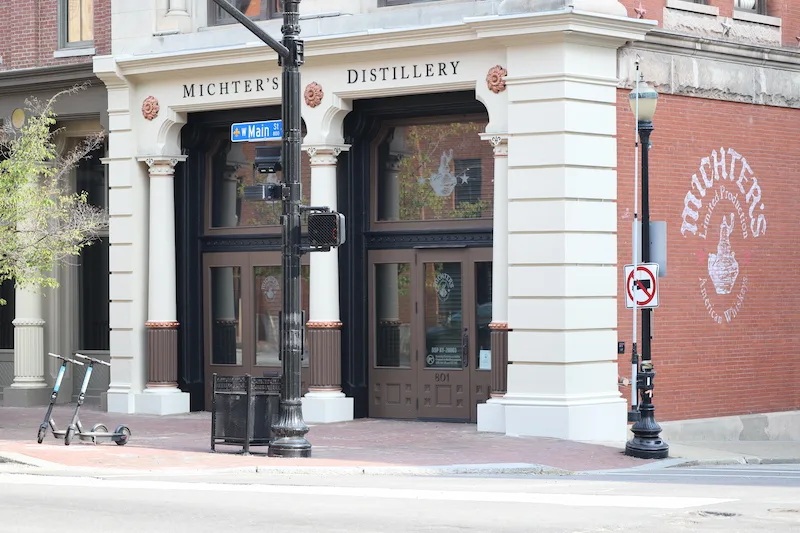
The pot still that inhabits the distillery was the same one that Dick Stoll used in the final decade at the Michter’s Distillery in Pennsylvania.
Picking up where the story left off, Joe reached out to David Beam to purchase the pot still that had been setting in his garage for almost 15 years.
David was sorry to inform him that he had just sold it a month earlier to a buyer in Ohio. Joe got the contact information of the new owner and anxiously called him up to make him an offer he couldn’t refuse.
Tom Hersbreck, founder of Tom’s Foolery, initially declined to sell it because he was just starting out and had received expert training on how to use it.
He told Joe that he appreciated the offer and that they’d keep in touch. I can only imagine that as the Fort Nelson building was nearing completion that Joe’s calls to Tom became more frequent.
Joe may have sent Tom a few cases of Michter’s Celebration because Tom eventually did give in to sell the still to Michter’s in 2015. It was transported to Fort Nelson for installation just in time for the end of construction in 2018.
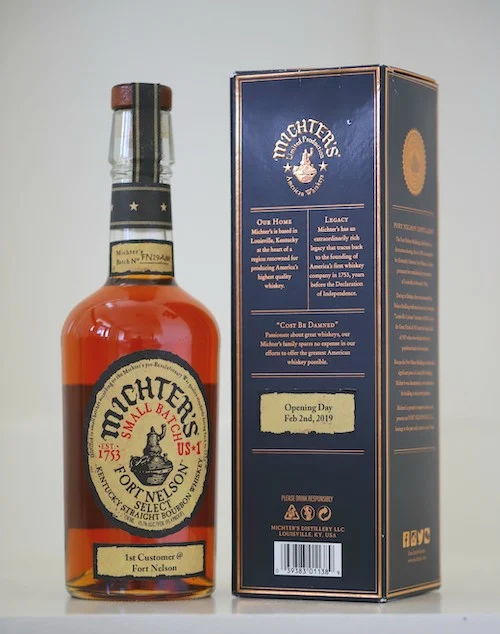
Fort Nelson officially opened their doors to the public on February 2nd, 2019. The first customer inside was Mike Frey who drove from Indianapolis to Fort Nelson that morning.
A special bottling commemorated the official opening. Inside, the fully operational pot still is hidden behind some partitions and can be seen only if you take a tour.
Since the still was active and not just a decoration, it is technically a distillery in its own right. Therefore, Michter’s assigned it as Distillery #1 or “M1.” The larger Shively location is known as M2.
Completion of Shively
In early 2015, Michter’s began to wrap up its construction of its distillery at Shively. The Shively location is situated in an industrialized part of town that has many warehouses and railroad tracks on the east side while a residential neighborhood is situated on its west side.
The 67,000 square foot facility was state of the art and packed the kind of equipment that showed that they meant business.
Standing at 60 feet tall, the 32 inch diameter column still has a capacity of producing one million original-proof gallons per year.
This is after four more 16,000 gallon fermenters were installed in mid-2016 along with the hiring of a second shift production team. There was even enough room to store and age up to 14,400 barrels within the facility.
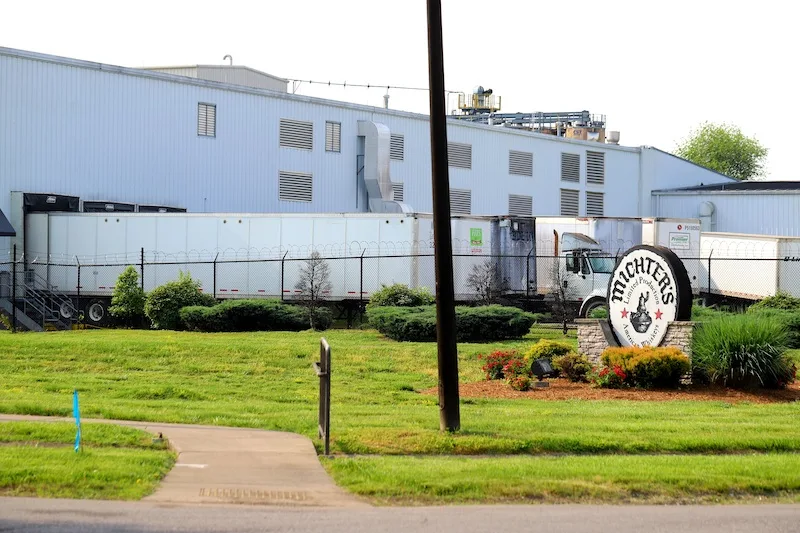
Michter’s also employs two pot stills at the Shively location although it is not known what their purpose is for. Initially they were used before the column still was installed as a way to test recipes but Michter’s literature indicates that they are still used today.
There is speculation that there may be a little bit of testing going on that would be used much in the same way Woodford Reserve uses their pot stills.
Woodford Reserve whiskies are not all 100% pot still distillate but instead are a blend of whiskey that combines distillate from Old Forester’s column stills and Woodford’s massive pot stills.
The quality control at Shively is said to be so strict, that at any point in the distilling or aging process that a whiskey is found to be unsatisfactory, it will be pulled, dumped and transported to a local Louisville company to be converted into ethanol fuel.
It seems hard to believe that Michter’s would rather have their own whiskey be converted into fuel rather than be sold to a barrel broker for money, but this only reinforces how seriously they take every step of their process.
Pam Heilmann is hired and Shively comes online
Towards the end of 2013, the Michter’s Distillery at Shively was halfway completed. But Michter’s still needed a true Master Distiller at the helm.
They found one in Pam Heilmann. Pam had nearly 15 years of experience at Jim Beam where she had been a Distillery Manager and worked directly with former Master Distiller Jerry Dalton.
One of her largest achievements during this time was that she helped expand the Booker Noe plant’s production by 50%. Considering the production numbers that Jim Beam already puts out, this was impressive.
Pam didn’t know that she was being sought out until she got the phone call from Michter’s asking if she’d be interested in working for them.
She would later accept and be hired under the position of Distiller and Vice President of Production.
It has been mentioned that it was Willie Pratt who came up with the idea to hire her in the first place. Pam noted in an interview that she was only the fifth person employed by Michter’s upon her hiring in 2013.
Interestingly enough, by 2018 Michter’s employees only numbered 33 in total.
The first barrels that Michter’s filled in August of 2015 occurred with Pam at the helm. This marked a huge achievement that had been 19 years in the making ever since Chatham Imports secured the Michter’s name.
Michter’s was now a fully operational distillery.
Not only was Pam one of the original members of Michter’s, she also broke ground as the first female master distiller to head a major Kentucky distillery.
These changes sent ripples through the industry that continue to show the value that women can bring to an industry that was long controlled by men.
Michter’s Talent Pool Expands
In 2014, Michter’s hired Andrea Wilson as their Master of Maturation. This little-used title made a lot of sense at this point in Michter’s production process seeing as they were committed to using whiskey-making methods that weren’t currently being used by any other distillery.
Her background in chemical engineering as well as her time doing consulting for Diageo made her an invaluable member to have.
As was already stated, Michter’s opted to age their whiskey in heat-cycled warehouses in the style of Brown-Forman’s, meaning the barrels would mature at a faster rate.
This brought an entirely new level of complexity to the aging process that she would have to monitor. Then there was the matter of the expensive barrels that Michter’s was using.
Just because they were some of the priciest ones in the industry, were they actually making the whiskey better?
Even new barrel styles, such as the ones that used all Chinquapin Oak for the Bomberger’s and Shenk’s line had to be closely monitored to determine if the distillate was aging differently in them.
Finally, the low barrel entry proof was also going to present unique challenges to the aging process as whiskey ages differently depending on the proof inside the barrel.
So although Master Distiller may sound like the most complex job in the industry, it’s easily rivaled by those that have oversight over the finished product like a Master of Maturation.
Dan McKee was hired in 2015 and worked side by side with Pam Heilmann as a distiller. In May, 2019 he moved up in the ranks to become the next Master Distiller after Pam decided to step out of the spotlight.
Both Pam and Willie became “Master Distiller Emeritus’” which demonstrates the “family-like” environment and respect for workers that have worked at Michter’s.
Interestingly enough, one of the first things Dan got to create as a Master Distiller was the 2019 edition of Michter’s Celebration Whiskey with Andrea.
At the time of this writing, Dan is still the Master Distiller.
Running Out of Space; Michter’s Warehouse Dilemma
In 2013, even though Michter’s had not yet brought its Shively Distillery online, it was officially recognized by the Kentucky Distillers Association as a “Proof” Level Producer.
This meant that they officially owned 10,000 barrels of aging whiskey in the state of Kentucky.
But since they did not own a place to store it all, that meant that it was aging in somebody else’s warehouse. It can be assumed that it was a Brown Forman warehouse since at that time virtually no other distillery in Kentucky operated heat-cycled warehouses.
In December 2015, a few months after the Shively Distillery came online, Michter’s was upgraded to a “Heritage” Level Producer because they officially had 25,000 barrels of whiskey aging in Kentucky.
It became clear that they were growing at a rate that could not be contained by the Shively facility’s storage area or the temporary space in their leased Brown-Forman Warehouse.
But where would they age future barrels of whiskey?
Joe Magliocco has gone on the record a few times in interviews that the Shively Plant had the capacity to store 14,400 barrels.
He then talks about a long-term lease with another distillery whereby he has enough storage space for 40,000 barrels (this would be Brown Forman).
But during a string of interviews in late 2018/early 2019 he began to reference a 40,000 barrel capacity heat-cycled warehouse that they had also leased in “Rollinsboro” Kentucky.
Rollinsboro may be hard to find on a map because it doesn’t actually exist. This slip of the tongue confused many enthusiasts and it wasn’t until Michter’s had released information about a heat-cycled warehouse they were leasing from O.Z. Tyler distillery in Owensboro, Kentucky that it finally made sense. Joe had simply been using the wrong name to refer to this location.
Around 2018, the OZ Tyler Distillery (now Green River Spirits Company) in Owensboro, KY completed renovations on Warehouse F.
This warehouse had been in existence for decades but a look at the time-lapse images on Google Street View shows that an external boiler room was built onto the warehouse sometime between 2012 and 2019 (Based on Google Street View time lapses).
This coincides with interviews at the time telling about their new warehouse contract with a distillery in Owensboro and this seems to make the most sense as no other warehouses appear to have this addition added onto them (according to Google Maps)
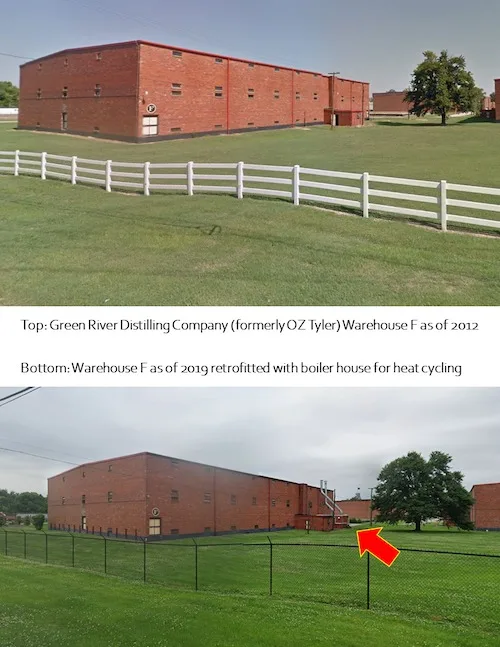
Michter’s was showing no signs of slowing down their rapid growth, so they had to figure out even more storage space for their extra barrels.
This led to the purchase of a 145 acre farm in Springfield, Kentucky in late 2017. Joe reported that the farm would grow grains that would be used in the whiskey they distilled at Fort Nelson.
He also mentioned that they were going to invest in more barrel aging facilities on those grounds. Sure enough, Google Maps showed two brand new heat-cycled warehouses popping up in the middle of some farmland in Springfield sometime in 2019 or 2020.
By these calculations, Michter’s now has a total capacity close to 175,000 barrels which makes them even larger than Willett.
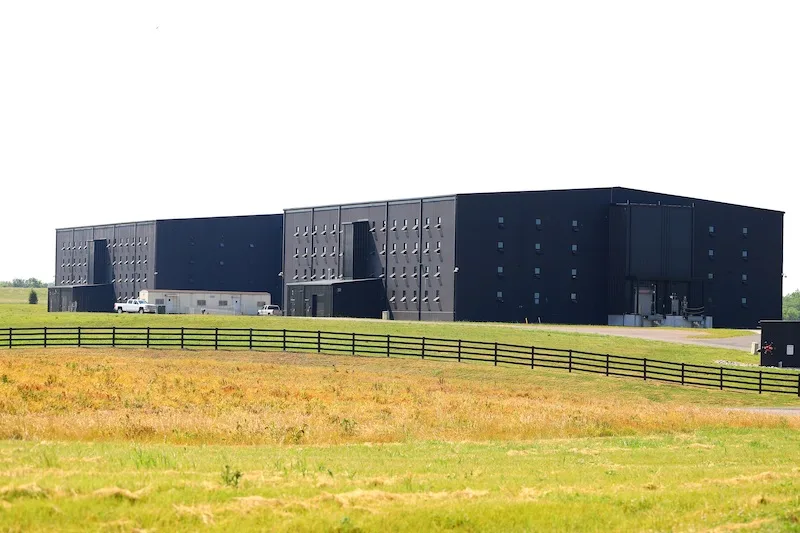
Michter’s Distillery Follies and Backlash From an Enthusiast Standpoint
Ever since Chatham Imports successfully obtained the abandoned Michter’s trademark, bourbon enthusiasts cast a wary eye over what would happen to the historical brand after being bought by an outsider.
If you go back through online bourbon forums in Michter’s early days (from 2000 to 2002), most of the talk centered around warning others that the new Michter’s bottling had nothing to do with the old style that was made in Pennsylvania.
Usually the biggest annoyance with the brand stemmed from the prices of their M10 products which hovered around $40 to $50 back in the early 2000’s.
Price creep continued to plague the brand through the eyes of the consumers because their prices were higher than almost all other brands.
Information about the source of their whiskey was also a question, but many in the business (like Julian Van Winkle III and Chuck Cowdery) were able to give insight where it was coming from.
The internet was a different place back at the turn of the millennium and non-disclosure agreements and fierce secrecy had not yet neutered the sharing of information.
As the years went on and Michter’s continued to grow, some enthusiast’s attitudes relaxed with the revitalized brand as the products that came out were generally regarded as high quality.
There were a few bumps in the road along the way such as Michter’s continuing to use the slogan “The Whiskey that Warmed the Revolution” which first came about when Michter’s was still at their original location in Pennsylvania.
The general argument with referencing the Revolutionary War stemmed from the fact that the “new” Michter’s had nothing to do with the “old” Michter’s in Pennsylvania.
Enthusiast brouhaha regarding the lack of acknowledgment between the new and the original brand continues in fits and spurts to this day.
If you are able to read the mood of the internet through articles and various “hate pieces” of some bloggers, it seems as if the movement of Michter’s backlash began in 2012 when Wine Enthusiast presented Michter’s with their “Distillery of the Year” award. Enthusiasts everywhere collectively lost it.
The backlash stemmed over the fact that Michter’s did not even have a fully operational distillery (although the grounds were purchased a year prior).
Willie Pratt, who was not a distiller at his previous job at Brown Forman, went up on stage to accept the award. Almost a decade later, it’s fascinating how often this continues to be referenced to this day.
But there are still a lot of questions revolving around exactly why they were chosen to receive this award.
Did Wine Enthusiast simply not do their homework to know Michter’s was not distilling their own whiskey? Did Michter’s have any advanced knowledge that they would be receiving that award?
If so, why did they think they qualified for it? If not, why did they accept the award that evening? The fact of the matter is that after it was all said and done, there were no answers given by either side about what transpired that evening and it has allowed resentment to grow to where it is today.
But for all the more the Distillery of the Year fiasco gets brought up, it dwarfed in comparison to the story behind the acquisition of the Bomberger’s and Shenk’s whiskey brands.
In 2014, Old Michter’s and New Michter’s were on a collision course when two separate Bomberger’s whiskies appeared side-by-side on liquor store shelves.
This confused customers who didn’t know the differences between the whiskey and it confused liquor store owners who couldn’t distinguish between the two when it came time to re-order.
Bomberger’s Whiskey was a sourced whiskey created by Erik Wolfe and Dick Stoll after Erik and his wife started the company “Heritage Spirits” in Pennsylvania. Erik sought out Dick to help guide him and his new startup and Dick obliged.
They got to work on a blend of young MGP bourbon and rye whiskey that would be in the style of the Pennsylvania Michter’s Sour Mash Whiskey that Dick used to distill.
Heritage Spirits brand filed the trademark for “Bomberger’s Whiskey” in December 2012 as a way to reclaim a lost part of Pennsylvania history and keep it inside Pennsylvania.
However, little did he know that three months later in February, 2013, Chatham Imports filed the trademark for “Bomberger’s Declaration” Bourbon Whiskey. A storm was coming.
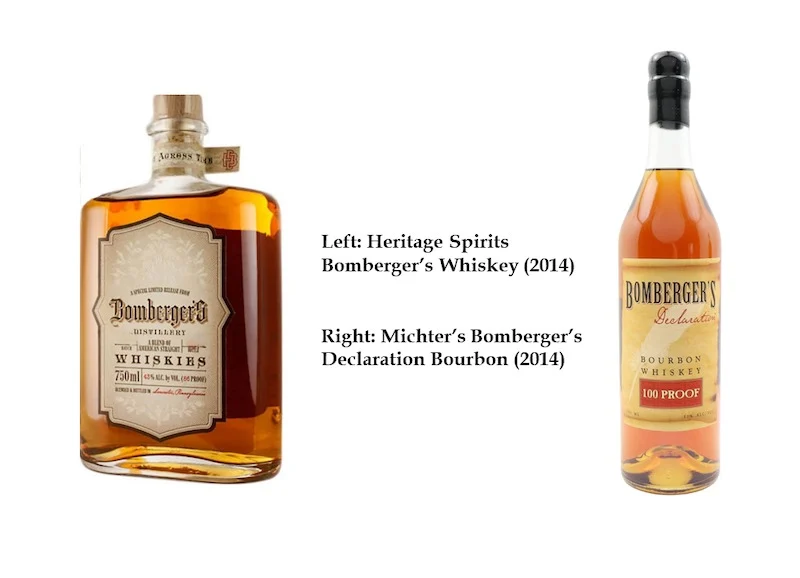
In early 2014, it was Chatham Imports’ Bomberger’s Declaration that would hit store shelves first. A few months later, Heritage Spirits “Bomberger’s Whiskey” showed up.
As distributors spread the cases of both brands across state lines, many liquor stores found their shelves containing both bottles.
As word made it back to the parent brands, it was Erik Wolfe’s company that fired the first shot by hiring a lawyer and sending a “cease and desist” letter to Chatham Imports.
Even though Heritage Spirits seemed to have beaten Chatham Imports to the punch concerning who was first to file for the trademark, it was Chatham who got bottles of Bomberger’s Declaration onto the shelves of retailers first.
At almost the same time that the cease and desist letter was sent to Chatham Imports, it was leaked/shared with journalist Fred Minnick.
Fred outlined the trademark fight and even shared parts of the cease and desist letter on his blog, which was the first to break the news.
Two days after the article was published, Chatham Imports had sent a response back saying that they would no longer engage in any more correspondence on these legal matters publicly.
The fight would now happen under the blanket of confidentiality and in the courts. It seemed as if Fred’s article had backfired in the sense that Chatham was not going to buckle under public perception and intended to fight this one out.
Whatever transpired between the two companies was short lived because 6 months later all legal proceedings ended with the Wolfe’s abandoning the fight for the Bomberger’s name.
Fred Minnick once again was the first on the scene with an interview with Erik Wolfe. In his blog post, Fred even admitted that he tried to force Chatham’s hand by publishing the article that detailed the “Cease and Desist” letter.
In a follow-up interview, the Wolfe’s discussed that their company essentially had to succumb because they were staring down the barrel of an additional $100,000 in legal fees had they continued to fight for trademark rights.
He could see it was a lost cause because his resources were much less than Chatham’s.
David losing to Goliath was something that outraged the bourbon community. If there is one thing that enthusiasts hold above all else, it’s the preservation of history and legacy of a brand.
And when they saw that Heritage Spirits was trying to revive a brand using one of the original names, at or near the original location and with the former master distiller coming out of hibernation for one last hurrah.
It was almost unfathomable what transpired. Dick’s legacy had only grown after Chuck Cowdery’s book, “The Best Bourbon You’ve Never Tasted,” was released which outlined Dick’s role in creating A.H. Hirsch bourbon at Michter’s Distillery.
At 85 years old, Dick didn’t have a lot of time left, yet he was willing to help create a new distillery that was local to Schaefferstown that would continue on his legacy where it had once stopped.
Chatham Imports and Michter’s would now be viewed as the bullies of the bourbon community for denying history to a company that was trying to revive it.
Chatham Imports view of the situation likely revolved around them now being the gatekeepers of the history of the brand.
They had resurrected a brand that was left for dead and had poured money and a decade and a half of time to building the image that their whiskey was the best in the business.
To have another brand out there that was attempting to split the legacy up could somehow come back to threaten their image in the future if someone else released terrible products that may be associated with the Michter’s name.
Conversely, if Heritage Spirits somehow created a whiskey that was even better tasting and selling than Michter’s, it would likely paint the Kentucky-based Michter’s in a bad light as makers of an inferior product.
The real truth of the situation probably lies somewhere in the middle. Heritage Spirits’ owners Erik and Avianna had the best intentions to revive a hometown legend since they saw that the fate of Michter’s was likely sealed forever in Kentucky.
They did not think it would be a contested issue using an older name since they wanted to keep the brand small and honor Dick Stoll at the same time.
What shocked Chatham Imports is that they were so laser focused on their expansion that they completely forgot to procure any of the other names that were associated with the Schaefferstown Distillery.
Michter’s likely panicked and quickly trademarked both Bomberger’s and Shenk’s names at the same time and then rushed to get the whiskey out to the market before Heritage Spirits.
This can be assumed by looking at the type of bottle that Chatham Imports put Shenk’s and Bomberger’s into. The shape was generic among glassware of the day and unlike any other Michter’s product at the time.
In fact, it was a typical “wine bottle” shape that most packaging companies typically always have in stock.
It’s almost the same story behind why Booker’s is bottled in the same wine bottle shape too. It was cheap and available in a pinch.
Regardless, Chatham knew they’d have the upper hand in litigation due to their experience and available capital needed to fight and win. And that’s exactly what happened.
A Brief History of all modern Michter’s Whiskey
Modern Michter’s Distillery has released some excellent whiskey in the two decades it has been operating. As this article has already explained, not everything they have bottled has been the result of their own distillation.
In fact, as of 2021 only their core lineup should be considered a product of their own distillery at Shively.
Everything else (especially bottles that wear an age statement and are bottled in the same bottle that Michter’s 10 products are) should still be considered sourced or contract distilled.
In this guide, I will organize each Michter’s whiskey according to when it was released followed by an explanation of what each whiskey is and where it came from.
Since Michter’s has shrouded the makeup or producer of each whiskey they’ve put out, I will make the disclaimer that the following information is based on the best sources I could find.
Beware that they may change in the future. The following are listed in the order that they were released for sale to the general public:
M10 Bourbon and Rye Whiskey
When Chatham Imports first began to produce Michter’s, they wanted to showcase extremely old and fascinating bourbons and rye whiskies under their Michter’s 10 labels.
Many of the single barrels raised some eyebrows as they were aged well into their teenage years and were still labeled as having around 220 bottles coming from each one.
Skipping to the point, this means that Michter’s was combining multiple barrels together inside of a single barrel before bottling it.
While this is not new in the industry, it is slightly misleading because consumers typically think that a single barrel means exactly what the name says.
It would’ve been far easier for Michter’s to put a batch number on the label and just have very small batches.
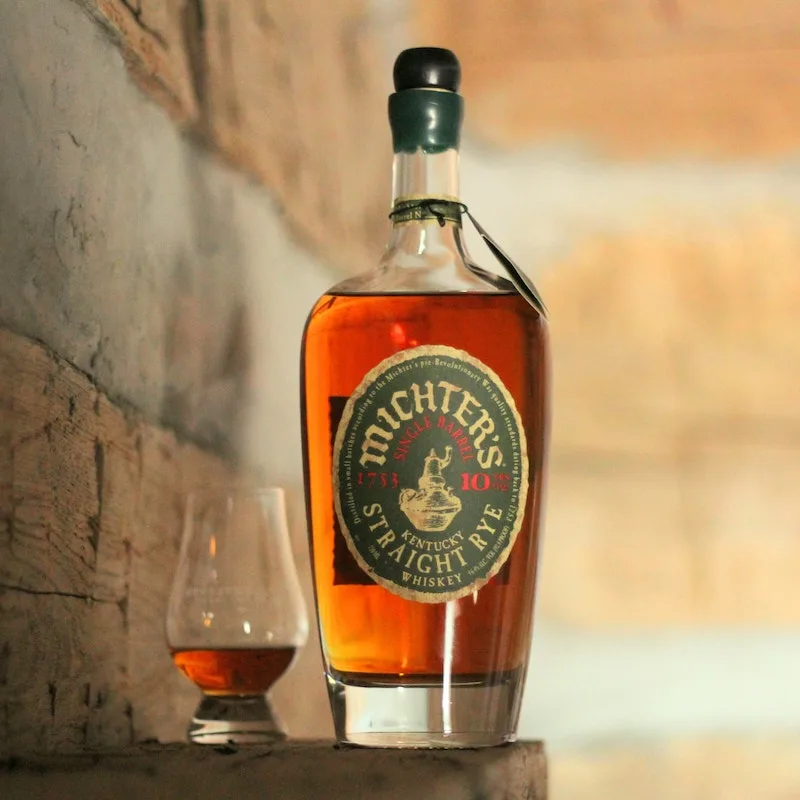
The earliest bottlings are the most sought after. Specifically, M10 bottles that begin with 7k or 10h are rumored to contain Stitzel Weller bourbon although it’s more likely it was the wheated bourbon that was made for a period of time at New Bernheim.
All other bottlings before 2015 likely contain Old Bernheim (Heaven Hill), United Distillers or Old Forester distillate.
M10 Bourbon that begins with a “15” and M10 Rye Whiskey that begin with a “16” was likely contract distilled at the Brown-Forman distillery starting in 2004 using the recipes and barrel entry proof that Michter’s specified. The bourbon recipe is rumored to be the Early Times mash bill (79/11/10) and the rye whiskey recipe is rumored to be similar to the Woodford Reserve/Old Watermill recipe (53/33/14). Joe has stated that no M10 bourbon or rye has ever contained a whiskey that is less than 11.5 years old.
This would mean that according to when Michter’s first began to have Brown Forman contract distill for them (2004), that 2015 could be the first year that Michter’s 10 year would contain whiskey that was contract-distilled to Michter’s specifications – although 2016 is much more likely.
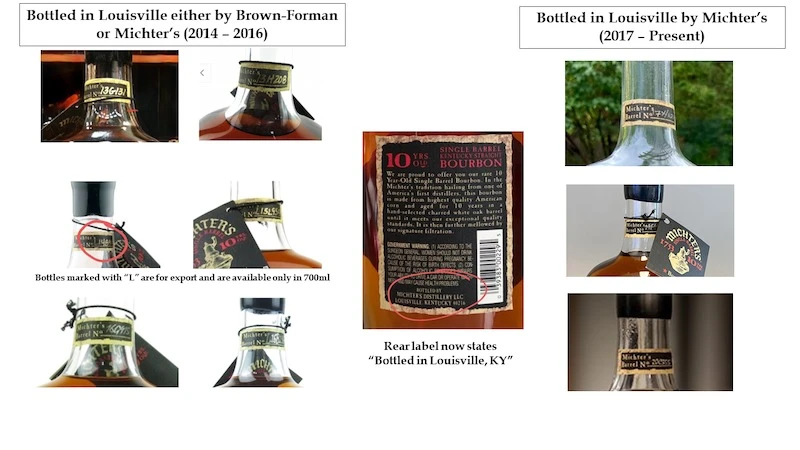
Of note, Michter’s labels have always indicated that their bourbon was made with the “highest quality American Corn.” If you read between the lines, you’ll notice that this leaves open the possibility that some of these bourbons could be wheated (like Stitzel Weller or Bernheim Wheated was).
Even future bottlings of Michter’s 20 and 25 year bourbon share the same wording which has led to further speculations about wheated bourbon being used.
Michter’s Unblended American Whiskey
Michter’s Unblended Whiskey first came to the market in 2003 and is widely believed to be closely related to Early Times whiskey.
The concept is that a portion of the whiskey is aged in used barrels and then mixed with bourbon. Early Times formula is that it blends 80% bourbon with 20% whiskey aged in used barrels that’s 3 years old.
Since Michter’s Unblended looks so dark and has such a sweet and “marshmallow-y” flavor, many believe that flavor and color additives are added in.
This is not illegal to do as long as they don’t try to label it a bourbon. But Michter’s is very clever by making sure to include the phrase that the whiskey was aged in “bourbon soaked barrels” on the back label.
The very first batches of Unblended American Whiskey were likely the result of a bulk whiskey purchase by Even Kulsveen at Willett.
The very next year likely saw production and bottling move to the Early Times Distillery. Sometime in 2020 or 2021, the Unblended Whiskey label is likely produced entirely in-house at Michter’s due to the sale of the Early Times brand to Sazerac.
Michter’s Single Barrel Straight Kentucky Rye Whiskey
Released in 2003 along with the Unblended American Whiskey, Even Kulsveen likely had the opportunity to buy this young-ish rye whiskey in bulk from Old Forester who was already producing a rye whiskey for Heaven Hill.
Although it doesn’t wear an age statement, early barrels were thought to be around 4 years old while modern barrels are said to be anywhere from 5 to 7 years old.
Just like the Unblended American Whiskey, this whiskey was likely bottled at the Early Times plant shortly after the 2004 contract agreement.
Starting in 2020 at the earliest, it can be assumed that the whiskey that is inside the bottles could have been distilled and aged at Michter’s own facilities.
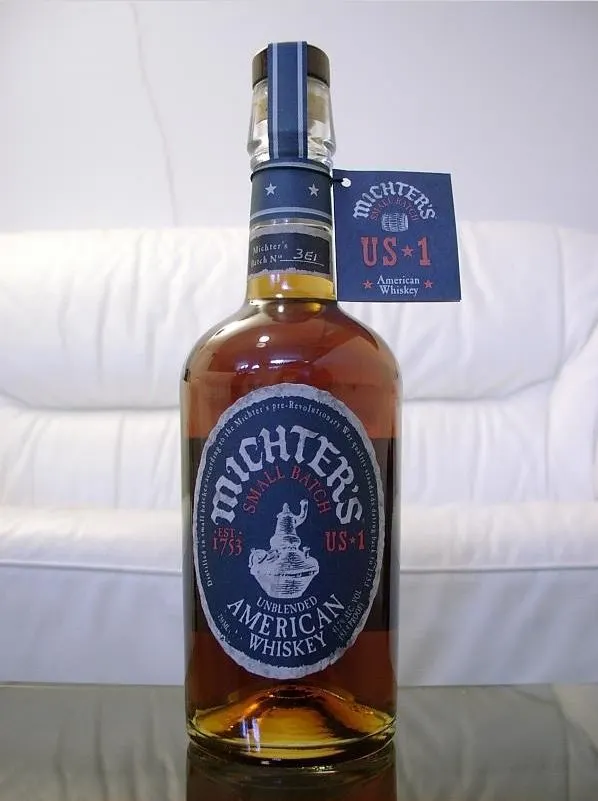
Michter’s US1 Straight Kentucky Bourbon
In late 2006, Michter’s Distillery finally released the companion to their rye whiskey in the form of a low proof bourbon. US1 bourbon likely uses the same mashbill as Early Times (79/11/10) and is aged for at least 4 years but the difference between it and Early Times is that it was specified to enter the barrel at 103 proof instead of 125.
Michter’s Distillery also has stated that their whiskies use a variety of char levels on their barrels so it is very possible that each batch contains barrels that range anywhere from Level 2 to Level 4.
Michter’s also states that no batch is comprised of more than 24 barrels due to the size limitations of their blending tanks.
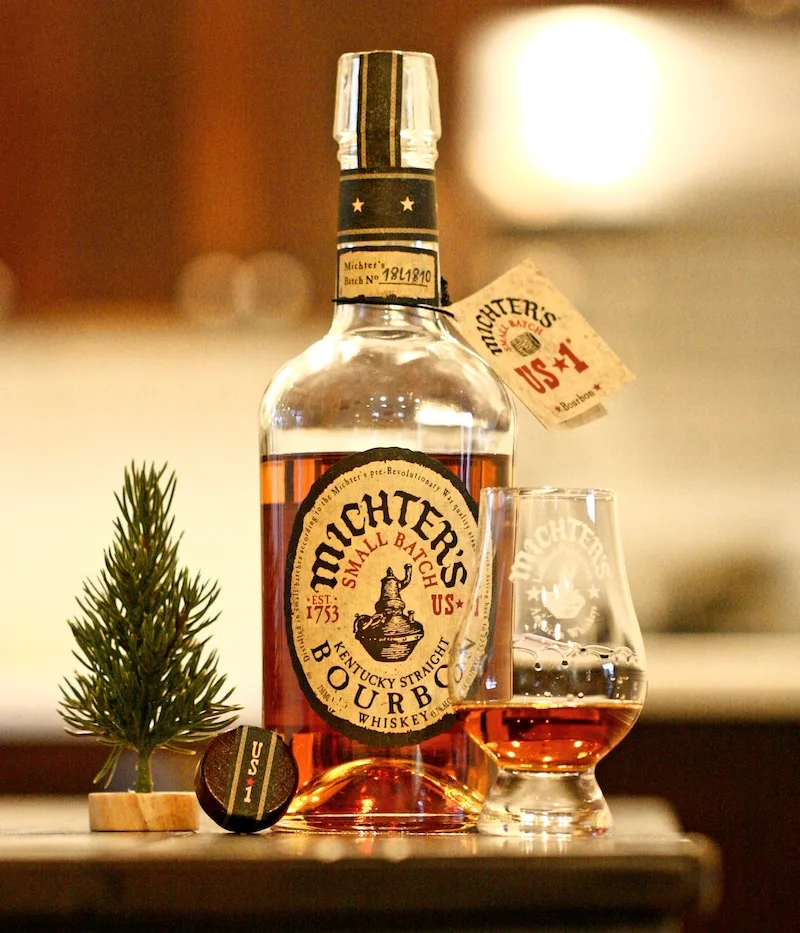
Michter’s 25 Year Old Bourbon
Michter’s Distillery had possession of some very rare 25 year old barrels of bourbon that somehow escaped Father Time and weren’t over-oaked.
These barrels were likely purchased (and possibly stored) at KBD/Willett from back in 2003 when they were selling and bottling Michter’s products.
The source of distillation is not revealed, but could include the usual suspects that were stored at KBD in the early 2000s (Old Bernheim, United Distillers, Old Forester and Stitzel Weller).
Willie Pratt personally oversaw the selection and bottling of these barrels as well as carefully applied his signature chill filtering technique to it so as to ensure it was not over oaked.
Then it was bottled at 116.2 proof. Very few of these bottlings were ever released to the public and it has only been released three times: 2008, 2017 and 2020.
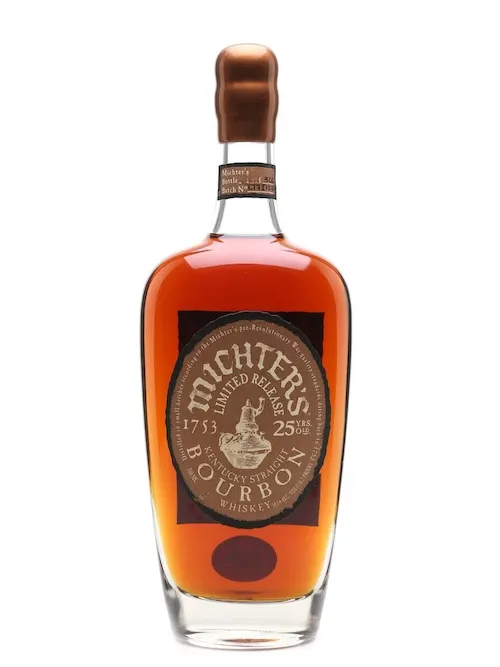
Michter’s 25 Year Old Rye Whiskey
Launched at basically the same time as their 25 year old bourbon, Michter’s 25 Year Old Rye Whiskey also was released in 2008.
Not much is known about the origin of this rye whiskey, but it has to be a Kentucky distillery as noted in the description. Each year it was released; 2008, 2016, 2017 and 2020 saw it being bottled at the same 117.3 proof.
This rye whiskey is thought to be sourced from the same stocks as the famous Willett 25 year rye whiskey releases as well as others like LeNell’s Red Hook Rye.
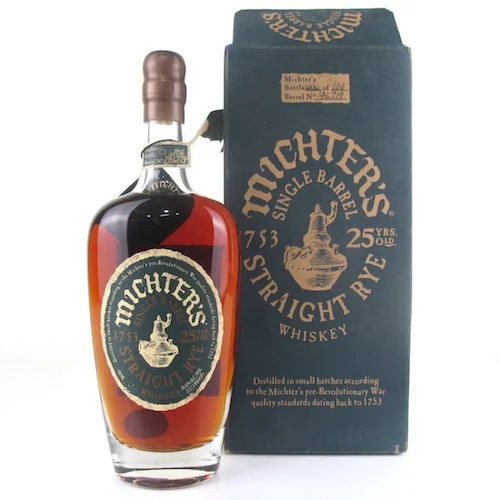
Michter’s 20 Year Old Bourbon
2012 was a busy year for Michter’s Distillery. Work was in progress for both their Shively distillery, Fort Nelson location and the continual release of both highly aged whiskies from the barrels they sourced at Willett to the new whiskies that expanded their lineup.
That’s why it was shocking to see a 20 year old bourbon being released. M20 would go on to be released every year (with the exception of 2017) in very limited amounts of bottles.
2012’s bottling was labelled “Single Barrel” but was eventually changed to reflect it was a “small batch” in 2016 and beyond. It is widely speculated that the first single barrel of M20 contained Stitzel Weller inside.
It may never be known how many more releases contained the holy grail of bourbon in it, but M20 continues to draw a large fan base each year.
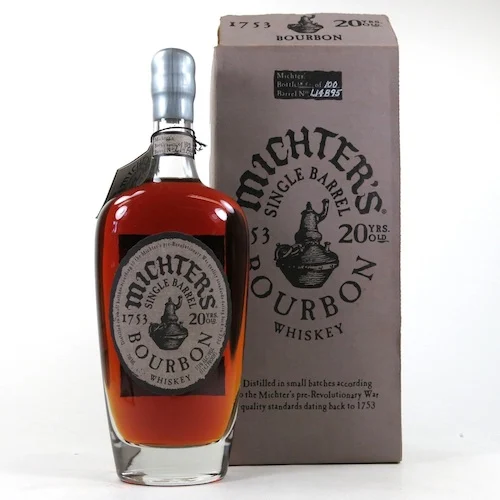
Michter’s claims that each barrel that makes it to 17 years old is closely examined to determine if it can achieve even greater status by aging it longer or if it should be bottled.
Those barrels that are determined to achieve greater complexity will go on to become M20 or M25 releases or even blended into Michter’s Celebration. But if it passes the test to become M20, it will be pulled, batched and bottled at 114.2 proof.
Proof and age that high is extremely fascinating to see as barrels that are that old tend to lose proof rather than gain it. And just like Willie Pratt mentioned before, they won’t bottle them unless they’re perfect, leading to 2017 being a year that saw no releases.
Michter’s Original Sour Mash Whiskey
First released in 2012, this bottling was the first attempt to recreate a product that would be tied in with Michter’s Pennsylvania history.
Since Joe was a Michter’s drinker before he owned the brand, he wanted to recreate the whiskey that started it all, “Original Sour Mash Whiskey.”
The “original” Sour Mash Whiskey recipe that Louis Forman and Charles Beam created called for 50% corn, 38% rye and 12% malt which made it unable to be called a bourbon.
Joe obtained some of the original bottlings of it and tried to recreate a whiskey using their available stocks that would taste close to what Michter’s tasted like from the 1950s to the 1980s.
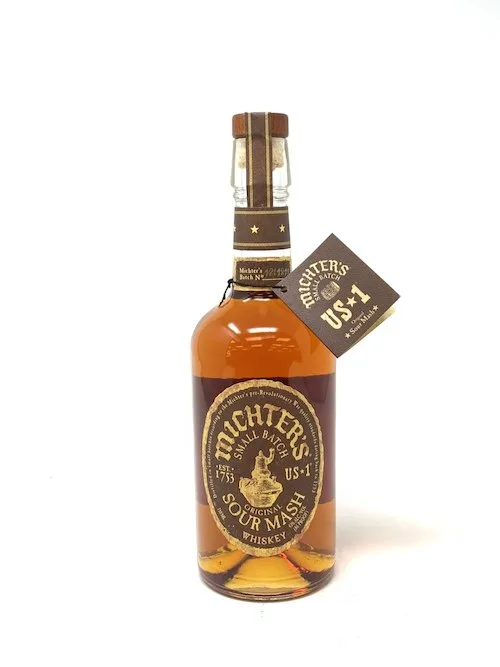
Technically, colorings or flavorings could be added to this since it is not labeled as a bourbon, but it has never been expanded upon.
Even the mashbill is kept a secret. Does that mean that this is a proprietary mashbill? Or is it a blend of bourbon and rye whiskey to achieve the same mashbill proportions as the original whiskey was made with a half decade prior?
Michter’s Celebration Sour Mash Whiskey
Released in 2013, Michter’s Celebration Sour Mash Whiskey would be the most expensive bottle ever produced up to that point by the company.
The whiskey’s composition and age makeup changes with every release just like the proof (which is at a true barrel proof unlike M20 and M25 releases).
What doesn’t change is the packaging. Each bottle comes in a highly adorned red box for presentation. The label on the bottle is made from 18k gold and the cork stopper is heavily weighted for a luxury feel.
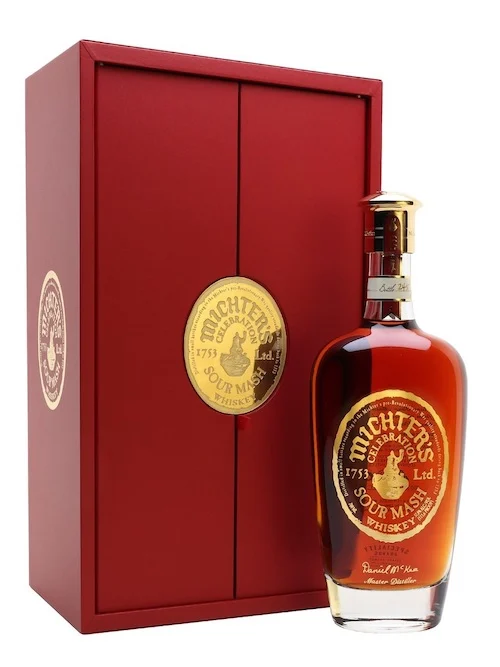
For the very first release of 2013, Willie Pratt selected 6 barrels (of both bourbon and rye whiskey) that were aged from 20 to 30 years.
The end result produced 273 bottles with a 112.3 proof point that were priced at an wallet-scorching $4,000. Subsequent bottlings would increase in price to $5,000. 2016’s release combined barrels as young as 10 years old all the way up to 33 years old (which was a rye whiskey).
That produced only 256 bottles and was the last year Willie Pratt had a hand in selecting and blending it before he retired. In 2019, Dan McKee and Andrea Wilson were responsible for creating their version of Celebration which contained 6 barrels of both bourbon and rye whiskey that netted 277 bottles and came in at 115.6 proof.
Michter’s US1 Bourbon Toasted Barrel Finish
Andrea Wilson, Master of Maturation, came on board to Michter’s in July of 2014. With her background in chemical engineering, she plunged headfirst into a variety of experiments.
It may be reasonable to assume that she was behind the invention of Michter’s Toasted Barrel finished whiskies by first introducing the Toasted Barrel Bourbon in the Fall of 2014.
The idea was to take a batch of US1 bourbon and fill up newly toasted (not charred) barrels to the brim. It was determined that 26 days was the right amount of time to influence the whiskey without overdoing it.
This resulted in additional vanillin compounds giving the whiskey a “marshmallow-like” texture and flavor.
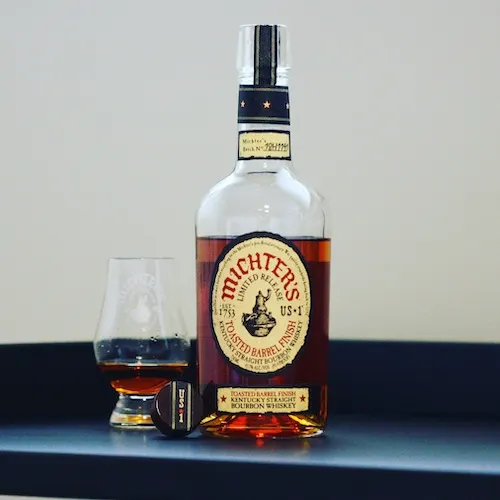
After the success of the 2014 release, Michter’s released additional batches of their toasted barrel bourbon in 2015 and 2018.
Michter’s Barrel Strength Straight Rye Whiskey
Michter’s Distillery was well aware of rye whiskey’s rising popularity in the United States and decided to test the market by releasing a single barrel version that was bottled at barrel strength in 2015. This release was contract distilled by Brown Forman.
Most bottles averaged around 108 proof at barrel strength due to the low barrel entry proof that Michter’s had dictated to Brown Forman.
The rye whiskey is said to be aged anywhere from 5 to 7 years old. It was a giant hit and spawned a subsequent release each year since then with the exception of 2017 (when all rye whiskey was diverted for the Toasted Barrel Rye release).
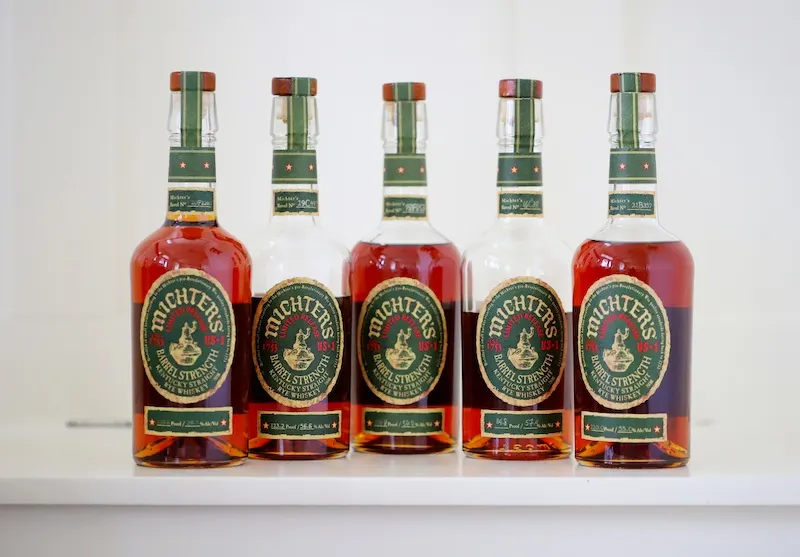
Starting in 2021, it can be assumed that bottles of Michter’s Barrel Strength Rye Whiskey were distilled and aged in Michter’s own facilities instead of Brown Forman’s.
Many whiskey reviewers have noticed a difference in the profile of the distillate when it was changed from Brown Forman liquid to Michter’s own liquid.
Curiously, it is unknown if Michter’s use of varying barrel char levels apply to their rye whiskey line since all Michter’s Barrel Strength Rye Whiskies appear to have similar liquid color.
It is speculated that the varying barrel char levels only apply to their batched products instead.
Michter’s Barrel Strength Straight Rye Whiskey Toasted Barrel Finish
Following on the heels of the success of Toasted Barrel finished bourbon, Michter’s decided to experiment with finishing their rye whiskey in toasted barrels in 2017.
Unlike the toasted barrel bourbon, they decided to bottle it at barrel strength. This made it one of the only toasted barrel finished whiskies they produce that is bottled at barrel strength.
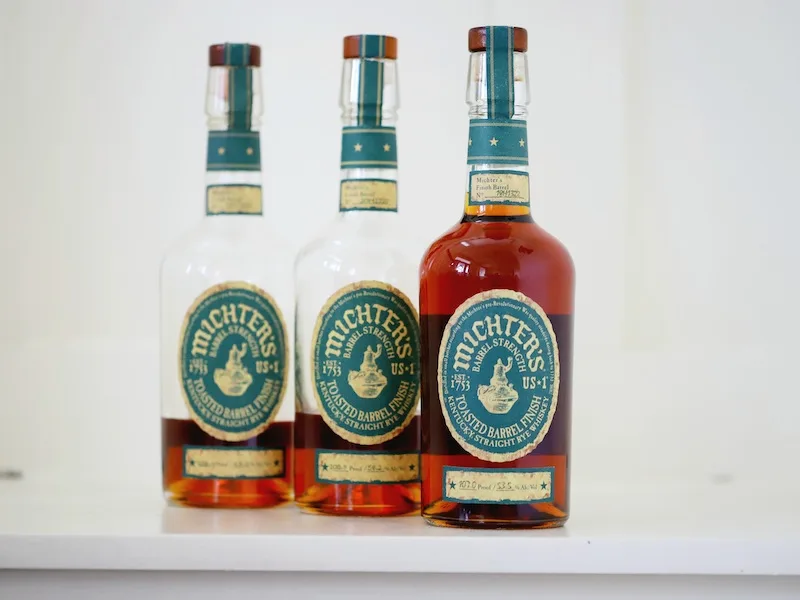
Of note, 2017 was the only year that no Barrel Strength Rye Whiskey was released due to all available barrels being used for the Toasted Barrel Rye Whiskey label.
Subsequent releases of the TB Rye would come out in 2018 (only available at Fort Nelson’s gift shop) and 2020.
Michter’s Barrel Strength Bourbon
Although bottles of Michter’s Barrel Strength Bourbon can be found wearing a 2017 bottling date, they were extremely limited.
The concept was that there were only a couple barrels each year that were designated as being special enough to be bottled up at barrel strength.
Previously, the only Michter’s Distillery products bottled at barrel strength were Michter’s Celebration, Barrel Strength Rye Whiskey and Toasted Barrel Finished Rye Whiskey.
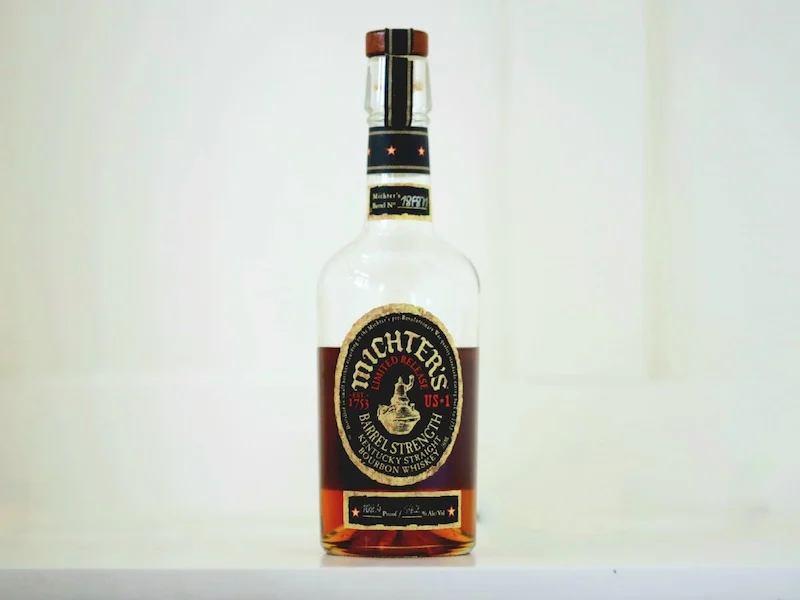
Each year since 2019, Michter’s has released a few barrels of Barrel Strength Bourbon with the majority being available for purchase at Fort Nelson.
The average proof is about 108 and it is believed to still be aged anywhere from 5 to 7 years.
Bomberger’s Declaration Bourbon
Even though Michter’s Distillery rushed the initial Bomberger’s Declaration Bourbon to market in 2014, it would quickly disappear only to be reborn in 2018 as a limited release.
The new bottle would have the same basic shape but had a revamped label and proof (increasing from 100 to 108). No age was provided but it can be assumed that it’s aged just as long as standard Michter’s bourbon and ryes are.
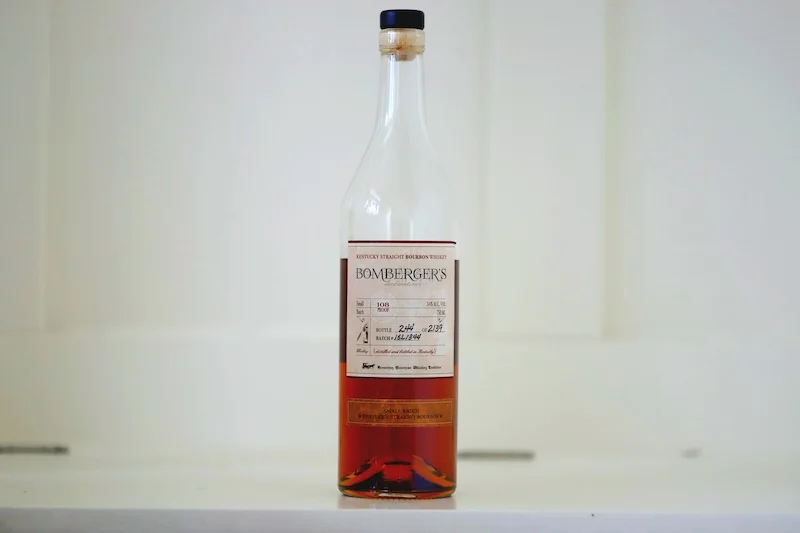
The one thing that separates Bomberger’s from Michter’s Barrel Strength Bourbon (aside from the fact Bomberger’s is batched) is that a certain number of barrels used in Bomberger’s are made from Chinquapin Oak.
Use of this oak does not stop it from being legally labeled as a bourbon. Instead, it is a much more rare and unique family of oak than the standard white oak that is traditionally used.
Michter’s Distillery specifies that the staves used to make Bomberger’s (and Shenk’s) barrels be seasoned outdoors for 36 months. This is practically unheard of in the industry.
With each subsequent release, Michter’s claims that the ratio of Chinkapin Oak barrels that are used in every batch of Bomberger’s increases, resulting in a different profile year after year.
Shenk’s Homestead Sour Mash Whiskey
Shenk’s Homestead Sour Mash Whiskey was initially created in the rush to secure all important names from Michter’s past. The first batch came out in 2014 and was bottled at 80 proof.
The label design was simple, yet felt rushed. It was allowed to disappear for a while but was then brought back in 2018 (alongside Bomberger’s Bourbon) to become an annual, limited edition release.
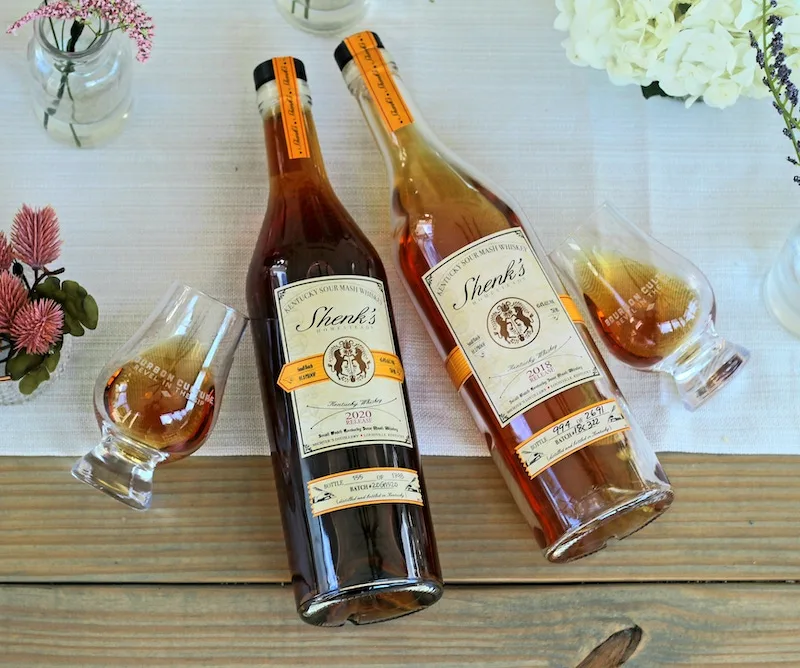
The concept behind Shenk’s was to create a whiskey that couldn’t be labeled a bourbon or rye whiskey, yet likely started off as a bourbon before having rye whiskey added to it.
In 2018, a percentage of French Oak barrels were used to age some of the whiskey. In 2019 and 2020, whiskey aged in Chinquapin Oak was used in the batch (with the 2020 release seeing a larger percentage of that particular oak used).
The low bottle proof of 91.2 is designed to create an easy drinking experience while retaining a lot of flavor.
Michter’s Original Sour Mash Whiskey Toasted Barrel Finish
Michter’s Distillery was on a roll with their toasted barrel finished whiskies, so it was no surprise to see them release a version of their Original Sour Mash Whiskey finished in toasted barrels in 2019.
Much to enthusiast’s dismay, the proof remained the exact same as the standard bottles of Sour Mash Whiskey (86 proof).
So while most reviewers noted a slightly improved profile, the proof was still too low to make much of a difference.
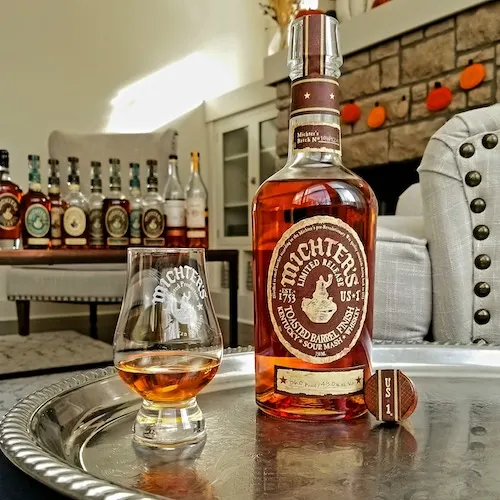
It was speculated that Unblended American Whiskey would receive the toasted barrel finish next, but that remains unlikely.
The reason being is that the Unblended American Whiskey label could just as well have additives added into it to replicate a toasted barrel experience rather than use an expensive toasted barrel.
Judging by most enthusiast’s reactions, Toasted Barrel Sour Mash Whiskey was one of the least loved Michter’s releases of the past decade.
The Future of Michter’s Distillery
All eyes are focused on Michter’s Distillery now that their own distillate is coming of age. No longer will their Brown Forman produced whiskey be something they can depend on for consistent products year after year.
From the very first barrel that was filled and rolled onto a rack to begin aging, Michter’s now had accomplished something very few other producers could achieve: becoming self-sufficient at producing whiskey.
Fort Nelson’s completion alongside of their heated warehouses coming online in Owensboro and Springfield were giant steps towards becoming a respected distillery that showed no signs of slowing down.
But now that the training wheels are off, Michter’s Distillery future solely depends on their ability to remain competitive with their other Kentucky distillery rivals.
There is no “bottom shelf” offering in regards to their products as they have positioned themselves in the market as a premium brand.
But as bourbon consumers become increasingly savvy at what they buy and drink, will they be able to hold onto the competitive edge that keeps consumers coming back to the brand?
Here are the issues that Michter’s Distillery must face head-on in the next five years.
- Offering a single barrel pick program
- Continue to improve Michter’s bourbon
- Realize that Michter’s Barrel Strength Rye Whiskey is the one bottle that enthusiasts judge the brand by the most and never settle for a lackluster release
- Nail the transition of M10 bourbon and rye in 2026, which should be the first year that Michter’s own distillate could be used
Every interview with a person from Michter’s will inevitably have the question asked “When will Michter’s start doing a single barrel program?”
Without missing a beat, the Michter’s rep that fields this question will usually respond with “we barely have enough barrels for demand as it is, we couldn’t possibly do a single barrel program.”
To which case, some interviewers would point out that distilleries 5 times smaller than they are have been doing single barrel picks for years now.
The Michter’s rep will usually squirm in their seat and dance around for a few more minutes before trying to change the subject.
Whatever the true reason is that Michter’s Distillery won’t implement a single barrel program is, they can’t deny that almost everyone else out there has been doing this for years.
Nobody is asking Michter’s Distillery to do a program on the size and scale of Heaven Hill or Jim Beam, but at least they could find a way to offer 50 barrels each year to satisfy their best clients.
Willett is a great example of how to do this. Willett single barrels may be next to impossible to land, but the fact remains that they’re out there.
To most distilleries, a single barrel program is a big headache because it usually requires hiring an extra person or two as well as some additional logistics steps.
But Michter’s Distillery is already set up to bottle single barrels anyway, so that hurdle has already been overcome.
The fact remains that consumers are thirsty for access and if the other distilleries have anything to show for their programs, it’s that it drives interest up on their brands.
There is literally no reason aside from a lack of willingness to continue denying a single barrel pick program.
Michter’s Distillery products are their US1 Single Barrel Rye Whiskey, Original Sour Mash Whiskey, Unblended American Whiskey and US1 Bourbon. But it is their US1 Bourbon that sells the most.
It is also positioned in one of the most fiercely competitive categories there is: Bourbon that retails between $20 and $45.
The stats on Michter’s US1 Bourbon do not measure well against other larger distilleries in the eyes of the consumer. The proof is lower, the price is higher and the perceived age statement (around 5 years old) is almost half the age of other producer’s comparable bourbons.
Michter’s will claim their quality sets it apart from their counterparts, but the final product does not come off that way.
Granted, Michter’s US1 bourbon is still pretty good for $45, but subjectively it’s not $15 better than competitors like Elijah Craig, Buffalo Trace, Eagle Rare or Old Forester Signature 100.
The only thing that could be the saving grace in the coming years would be to attempt to increase the age of the barrels that go into each batch. This is much trickier with the use of heated warehouses, but could still be done.
It may become a more expensive endeavor, but as moderately priced bourbon becomes more crowded and competitive, Michter’s Distillery may see their breadwinner fall out of favor among buyers.
A decision should be made in the future on whether or not to increase proof (maybe by simply releasing a bottled in bond bourbon) or put an age statement on the bottle because these are things that will see them being left in the dust among their competitors.
Whether or not Michter’s wants to believe it, their Barrel Strength Single Barrel Rye Whiskey is the single most revered product they produce according to whiskey enthusiasts.
So why the Barrel Strength Rye Whiskey?
American whiskey enthusiasts are a fickle bunch and view M10 products as too low in proof and M20 and M25 releases being virtually impossible to obtain or afford.
They also view the toasted barrel releases as too gimmicky while the Barrel Strength Bourbon is too rare to find at a reasonable price.
That leaves the Barrel Strength Rye Whiskey as their most beloved and available allocated product. Early releases of the rye (2015 and 2016) continue to increase in popularity as more people taste their way through the years.
Part of this reason I have already explained seeing as how the 2015 and 2016 releases may have been more aged than the more recent releases.
Joe even hinted that some of them may have been aged up to 8 years old (I speculate they could be as old as 10) during his interview with Bourbon Pursuit.
However, the newest releases from 2019, 2020 and 2021 are showing a decline in overall taste profile that may stem from a decline in age.
They need to seriously consider letting these barrels age longer in order to achieve the rye whiskey dominance that they came close to achieving.
Michter’s Distillery may want to be known as a bourbon company first, but the bottom line is that most enthusiasts respect them for the rye whiskey they produce rather than their bourbon. They cannot let this one slip.
Michter’s 10 Year Old Bourbon and Rye Whiskey are in a tenuous spot. There likely won’t be any changes to the low proof that these single barrels are bottled at, but the age statement they wear is becoming less impressive with each passing year as other Kentucky bourbons gain theirs back.
Granted, M10 products are always a bit older than 10 years, but in an age where every major Kentucky distillery has seemingly put an age statement on their allocated products (most at barrel proof), one has to wonder if the allure of the low proof M10 label will fade.
Michter’s claims that these barrels are the cream of the crop, but it is harder and harder to assure customers that they are worth double or triple the price of their competitors.
This is why once 2026 comes around, Michter’s must think long and hard about if their own barrels are up to snuff before they put them out on the market. They cannot afford to stumble on this important release.
As of 2021, Michter’s Distillery has the look and feel of an NFL team that had a really good offseason and draft. The potential is there, the pieces are in place and now all that is needed is to be able to put it all together to become an unstoppable force that will create a lasting dynasty.
For example, some of those new players may need to ride the bench for a few more games before becoming starters (Michter’s Barrel Strength Rye Whiskey).
The dependable veterans will have to give it their all in their final few seasons (Michter’s 10 Year Bourbon and Rye). And hopefully the dynamic, but injury prone, hotshots can capitalize on their talents to really elevate the rest of the team (Barrel Strength Bourbon, Bomberger’s and Shenk’s).
But a team effort like that should take them to the championship and beyond. Joe Magliocco and group will need to be patient and take the setbacks as they come.
But with determination and an ability to make the necessary game changes (and maybe throw in some trick plays… like a wheated bourbon release?), Michter’s Distillery should be able to find themselves on the winner’s podium of Kentucky Distillers for decades to come.
This Article could not have happened without the bounty of information available on the internet. Particularly, the large amount of journalistic research by Ethan Smith who is to be considered an expert in all things Old Michter’s. Please visit the links below to learn even more!
Ethan Smith Interview With Whiskey Advocate “What Killed Michter’s Distillery?”
straightbourbon.com – Ethan Smith exploring the ruins of Michter’s in PA
The Bourbon Truth Blog – Michter’s
Hagley Museum and Library – Louis Forman Business Papers
straightbourbon.com Early batches of New Michter’s
The Whiskey Wash – Article about Bombergers
Gold Plated Decanter Sale and Destruction
Featured Products
- Neat Traveler

- View Larger
- Description:The Aged & Ore Neat Traveler is a complete travel kit for spirits. We combined our widely praised Neat Glass with one of our 3oz Flight Bottles and housed them together in a custom EVA travel case. Perfect for a night away with your favorite pour. The tie
- Bottle Flight

- View Larger
- Description:The Aged & Ore Bottle Flight is a premium set of 4 custom silicone wrapped glass bottles designed to transport and share samples of your favorite spirits. The flight bottles come in a custom EVA travel case that fits perfectly in any small bag. An Aged &
- Travel Bundle
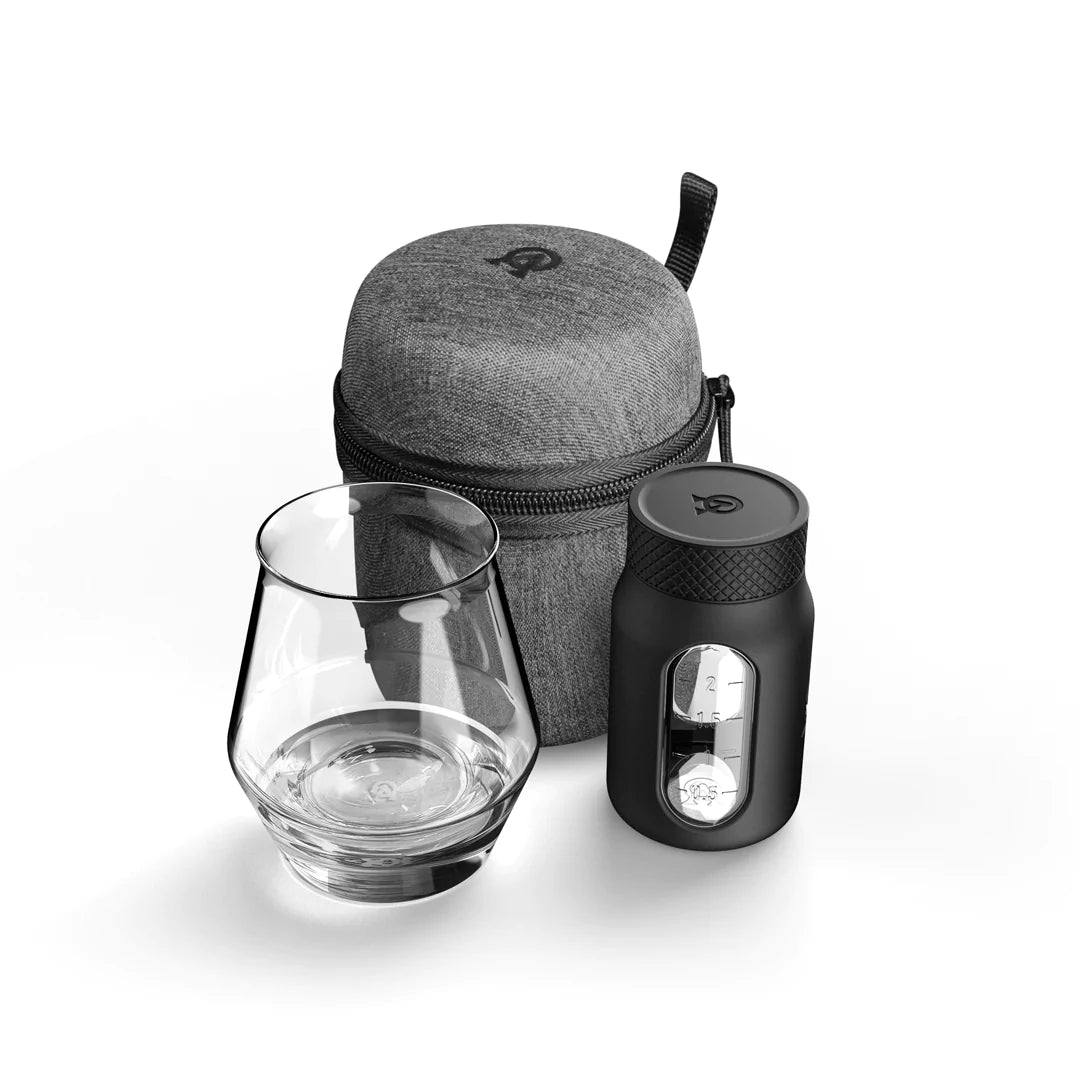
- View Larger
- Description:This Bundle combines two of our crowd favorite products, creating the ultimate travel bundle to bring along your favorite spirits and glassware. Bundle Includes: Neat Traveler (Gray) Bottle Flight (Gray) Note: This bundle is only available in gray and col
*Bourbon Culture is reader-supported. When you buy through links on our site, we may earn an affiliate commission.

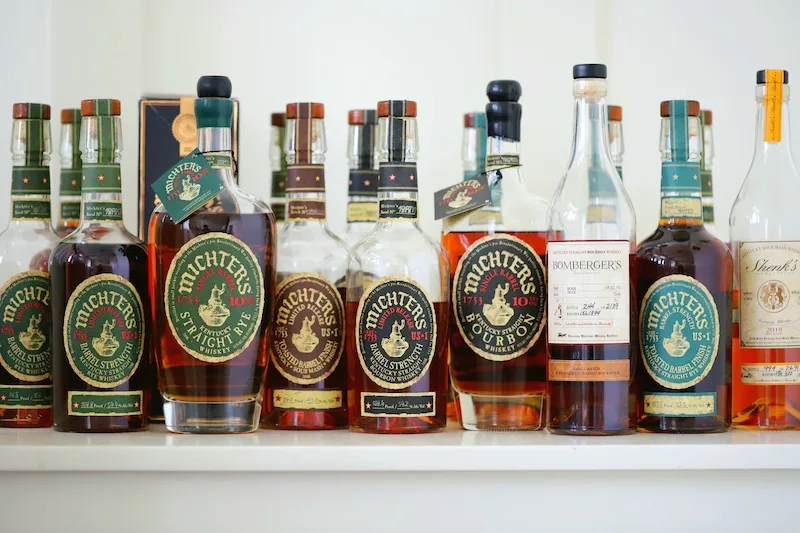
Willaim
Thursday 25th of January 2024
Thank you for providing such an educational and enjoyable read. I will use this as a reference for years to come.
LSM
Tuesday 28th of November 2023
fantastic to have a comprehensive history! Particularly enjoyed the Bombergers and Shenk's information
Rick
Sunday 17th of September 2023
Extremely enjoyable article. I had wondered about how they ended up in Kentucky. You provided a great deal of detail. The next time I reach for Rye, I'll reconsider Michter's.
Nick Anderson
Tuesday 22nd of August 2023
This is THE definitive write up covering all of the rich history of Michter's and what came before on those hallowed grounds in Schaefferstown, PA. Great job pulling all of this information into one source that I use regularly.
Logan
Thursday 12th of January 2023
Beautiful write up, really enjoyed writing it, thank you! Any idea how many cases they are producing per year all around?